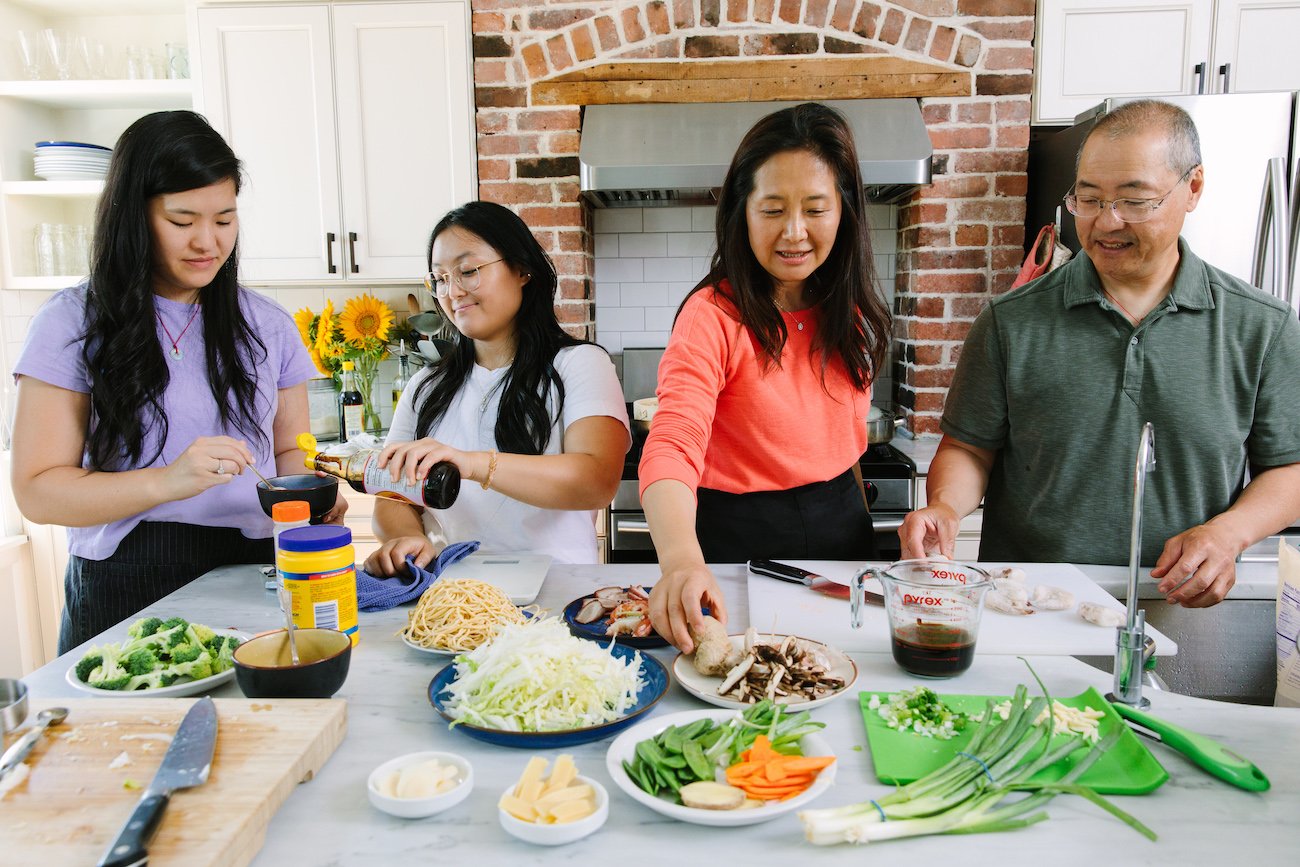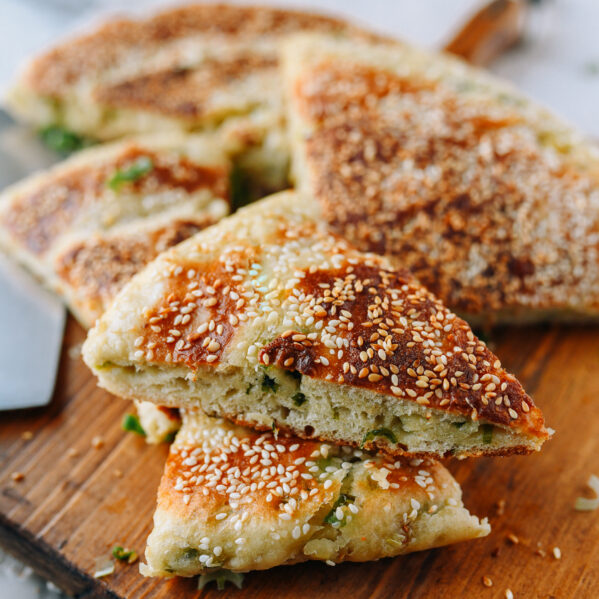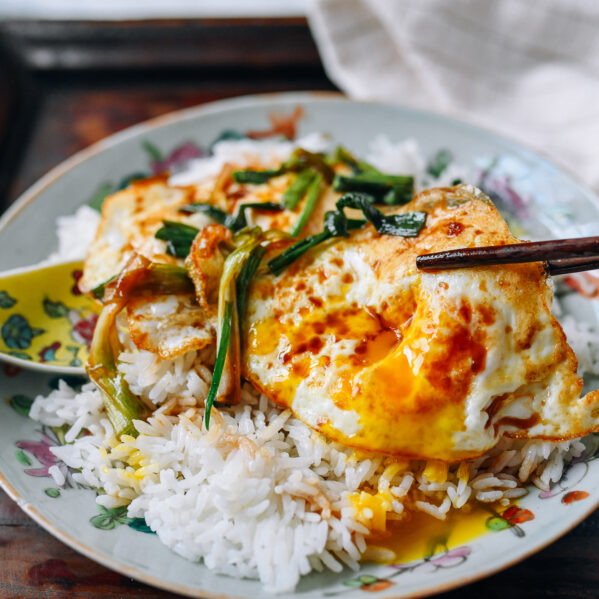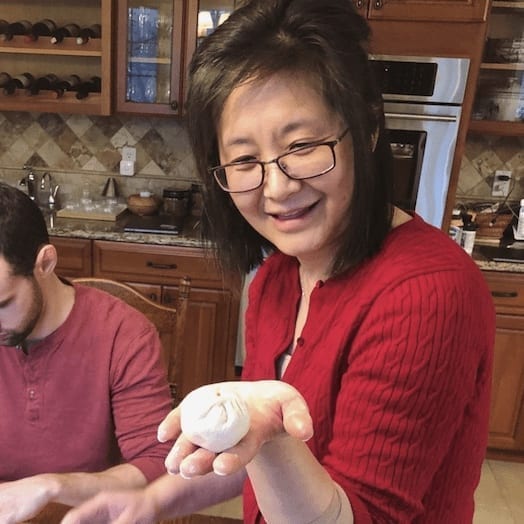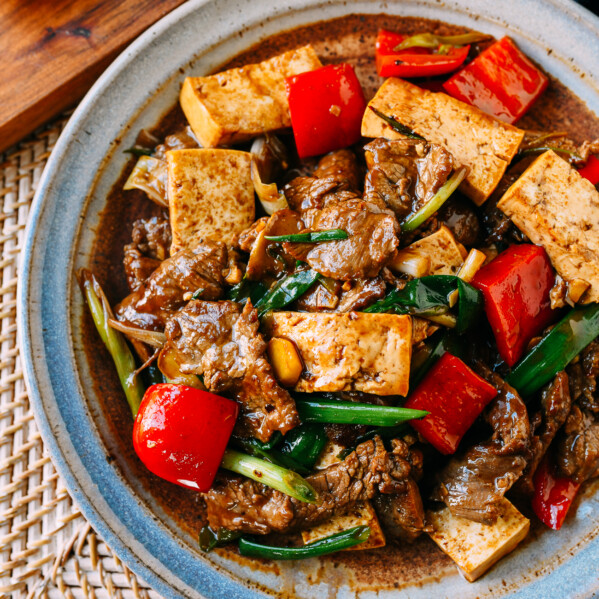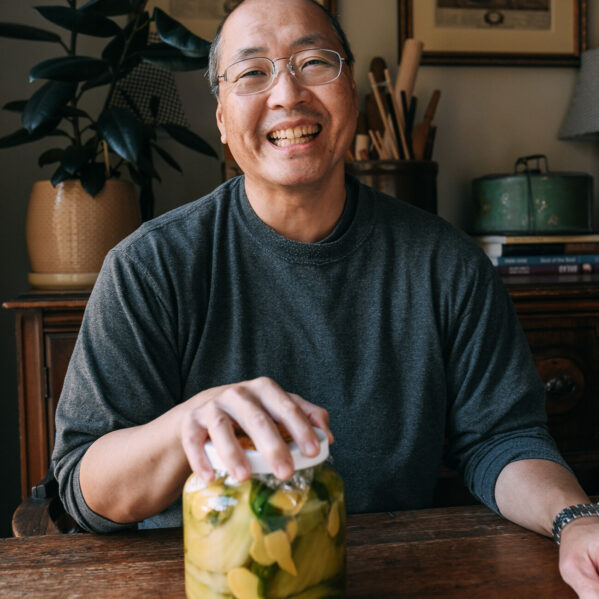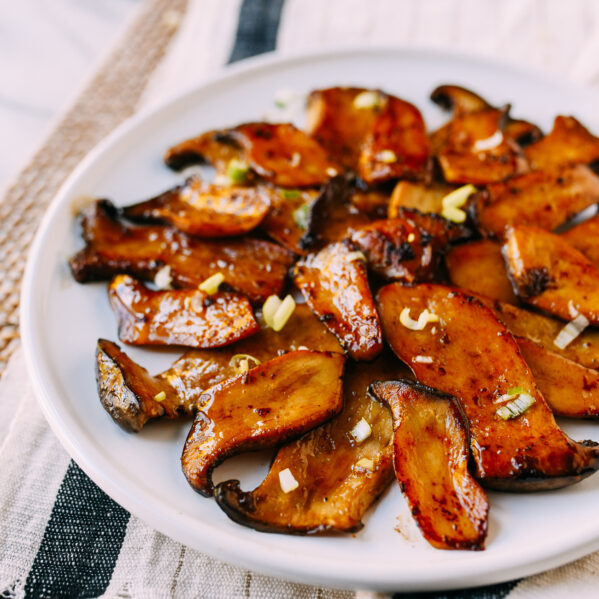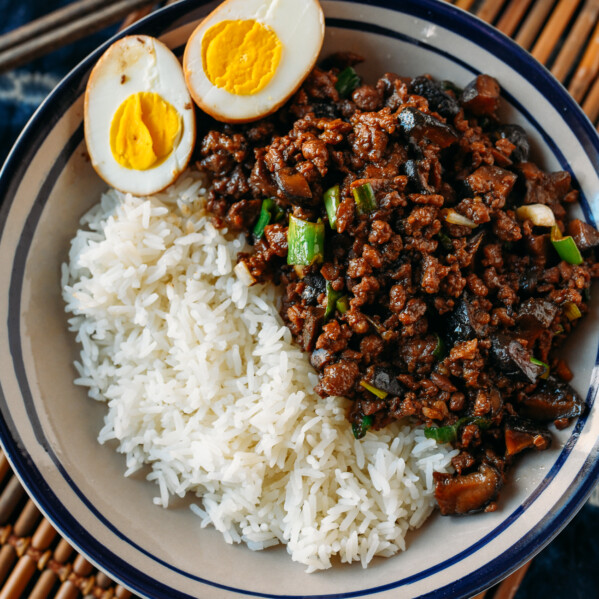Walk into any Chinese market, and you’ll be greeted with more Chinese vegetables—various types of leafy greens, mushrooms, root vegetables, melons, squashes, beans, and sprouts——than you know what to do with!
We are big veggie eaters here at The Woks of Life, and our goal is to help you know exactly what to do with all these Chinese vegetables.
Below, you’ll find a short description of each ingredient, as well as a ‘Read More’ link to a more in-depth article, if available. If you’re looking for a different ingredient, type it into the website search bar, or check our main Chinese Ingredients Glossary page to peruse other categories!
Leafy Greens
Mushrooms / Fungi
Root Vegetables
Melons, Squash & Loofah
Other Vegetables
Leafy Greens
Bok Choy (白菜, Báicài)
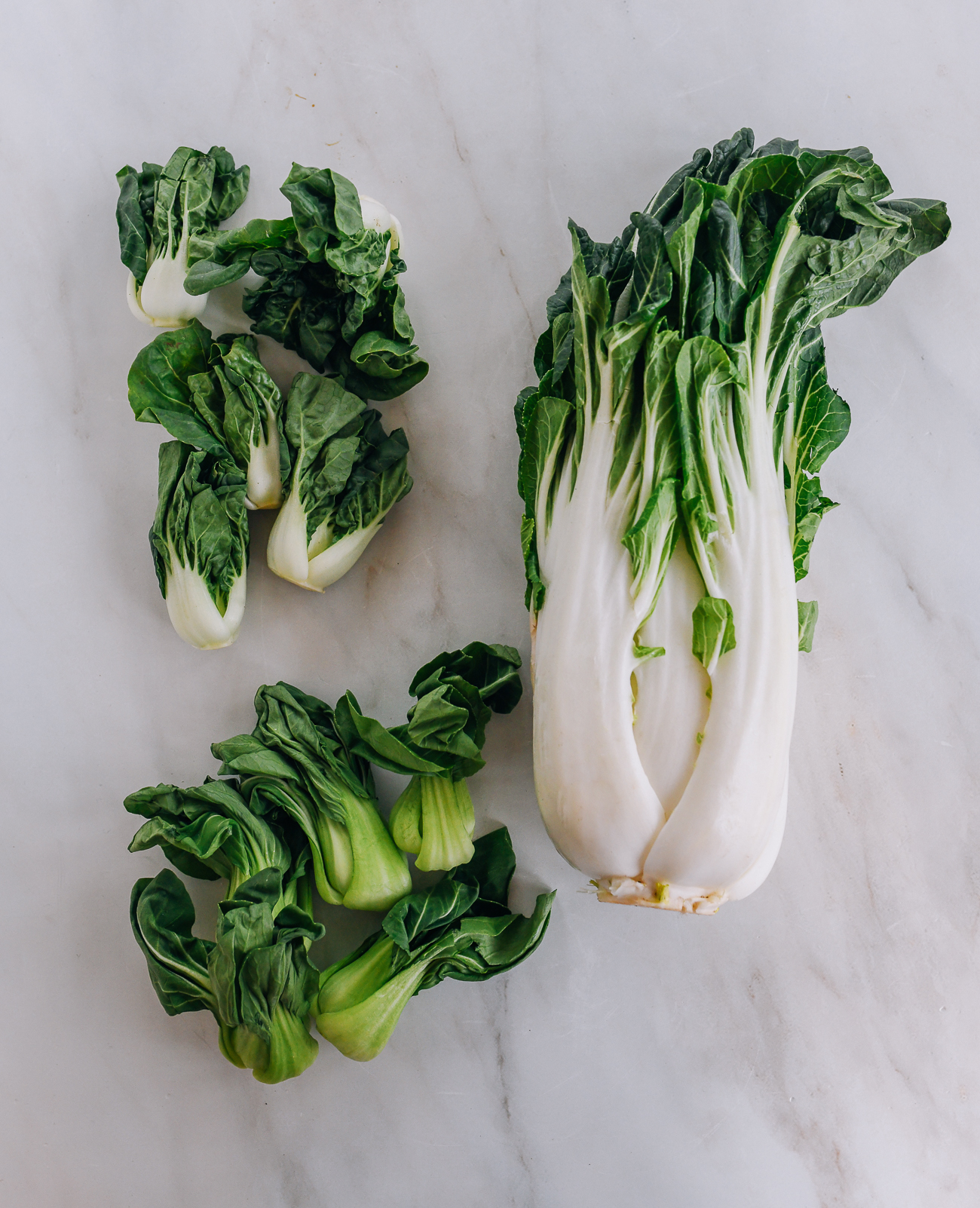
You’ll find several varieties of bok choy, which is the Cantonese pronunciation of bái cài (白菜), literally “white vegetable.” They include large bok choy, which we rarely use but is available in regular supermarkets, Shanghai baby bok choy, dwarf bok choy, and “little bok choy.” They’re very versatile, and can be stir-fried or added to soups, fillings, and more. See our bok choy article for more on each type and how to cook them, and our how to grow bok choy post.
Choy Sum / Yu Choy (菜心 / 油菜, Cài xīn / Yóucài)
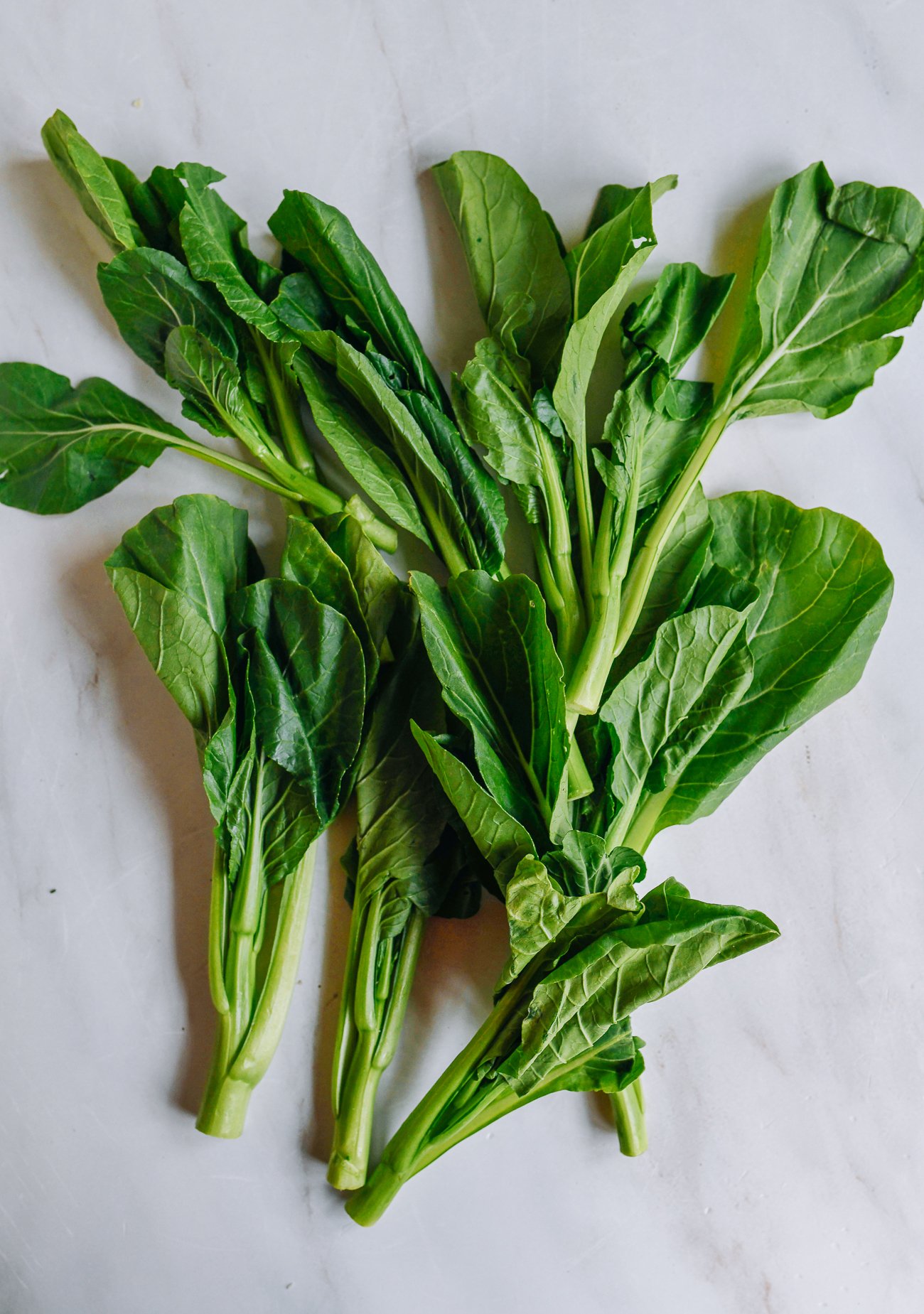
Though it looks similar, don’t confuse choy sum AKA yu choy with Chinese broccoli. It is much sweeter and more tender, with a texture closer to bok choy. It’s also incredibly versatile as a side dish or addition to so many recipes. Yu choy translates to “oil vegetable,” because it’s in the rapeseed family, which is used to produce oil. Buy them as tender young plants (yu choy miu) or as more mature stalks. This versatile dark green, leafy can be stir-fried, added to soups or noodle dishes, or blanched and served with oyster sauce.
Tatsoi (塌棵菜, tā kē cài)
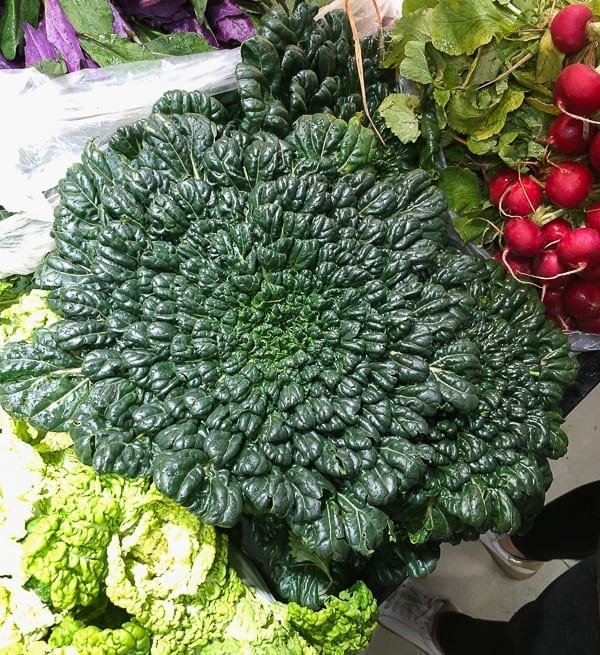
Like bok choy and choy sum, tatsoi is part of the cabbage & mustard family. Known as tat choy in Cantonese, it goes by different names. The vendor displaying this specimen (left) in a Beijing market called them Chrysanthemum vegetables (jú huā cài – 菊花菜) because they look like big Chrysanthemum flowers. They form large heads of tight bok-choy-like stems and leaves, and can be used in much the same way.
AA Choy (AA 菜, aA cài)

AA Choy is similar to the leafy portion of celtuce, AKA stem lettuce. Also sometimes called A-Choy, it is almost like a more tender romaine lettuce. It is usually stir-fried with chopped garlic, served with hot pot, or blanched. Another name for it in in Mandarin is yóumài cài (油麦菜). Be sure to not overcook this vegetable, as it is very delicate. It just needs a very quick turn in the wok! A bit more oil in the wok helps give the vegetable a nice texture after stir-frying.
Chinese Broccoli (芥兰, Jiè lán)
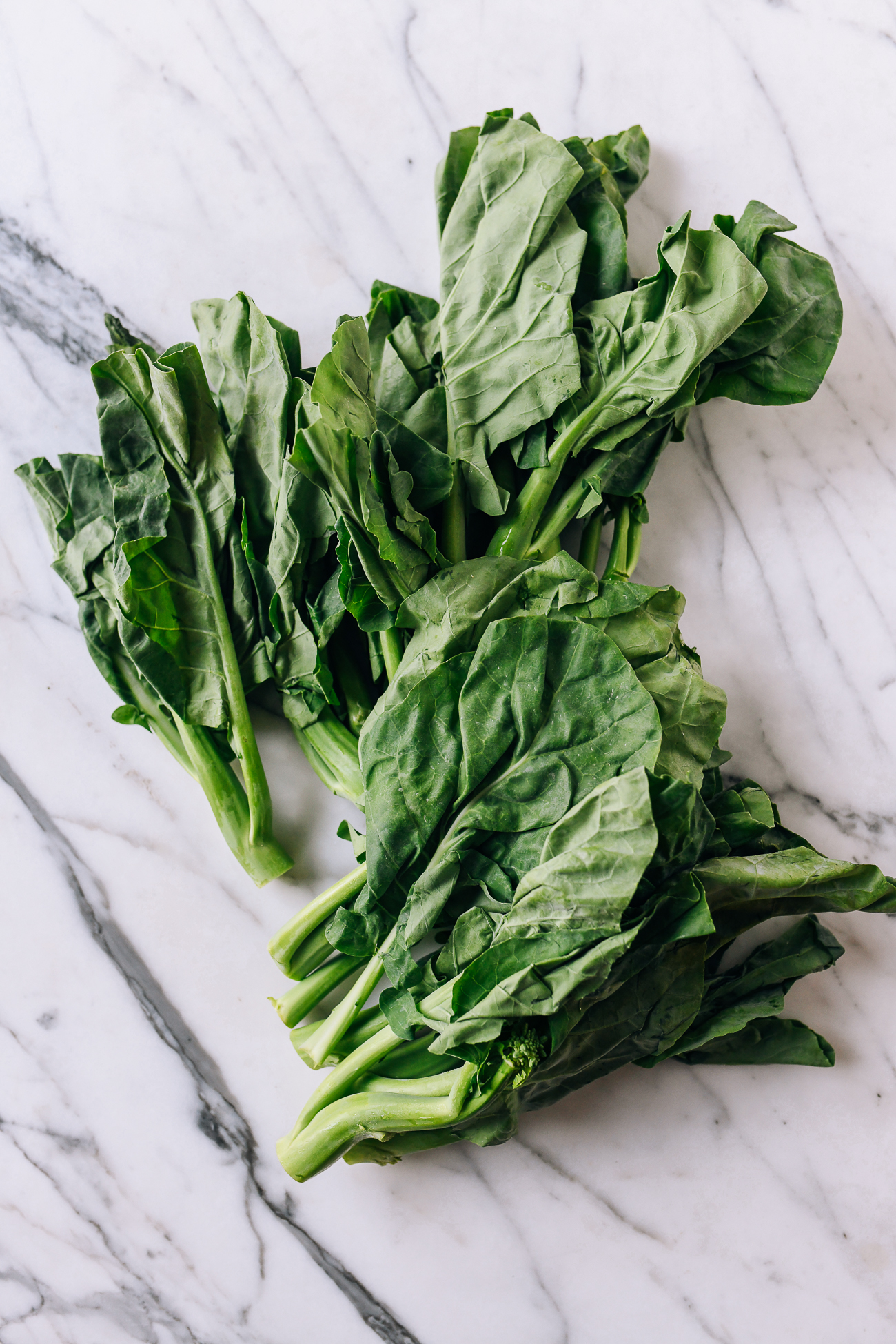
Chinese broccoli, or gai lan in Cantonese, looks nothing like regular broccoli (xī lán huā – 西兰花, or literally ‘western flower’). It has long stems and dark leaves. Avoid stalks that are too thick with a lot of open flowers or yellow leaves. This means the veggie is tough or simply not fresh. How to deal with those thick stems? Trim the ends (about 1/4-inch) and peel the tough outer skin off the bottom 3 inches of stem with a vegetable peeler—similar to what you might do for asparagus. You can also find young Chinese broccoli, which is more tender. Read more about it here.
Water Spinach (空心菜, Kōngxīncài)
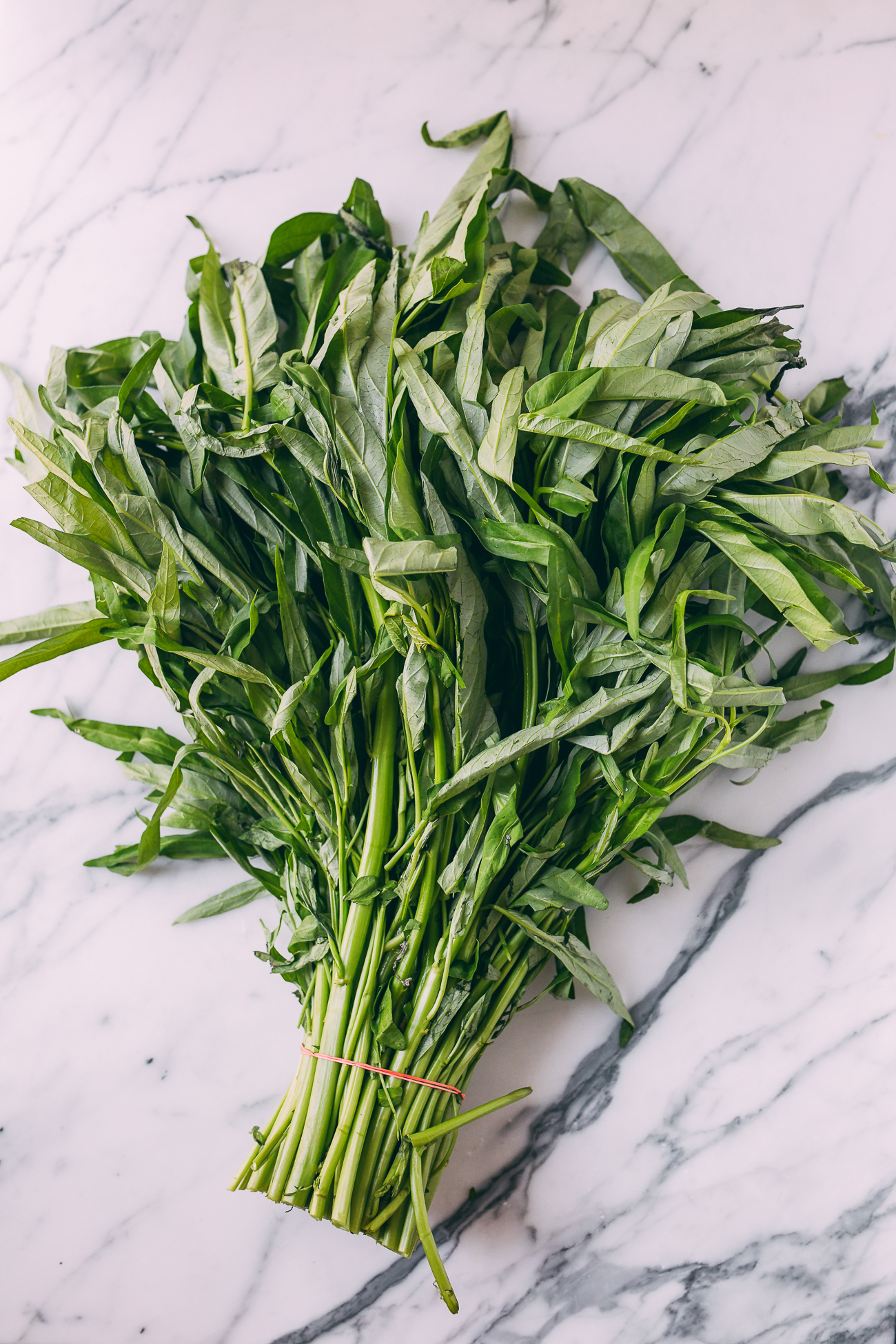
Water spinach grows in water or damp soil, with very tender leaves and crunchy stems. Known as ong choy in Cantonese and kangkung or kangkong in parts of Southeast Asia, the name for this vegetable in Mandarin translates to “hollow heart vegetable.” Indeed, the stems are hollow like a straw! It comes in two varieties: green stem (pictured left) and white stem, which is lighter in color with wider leaves. For ways to cook it, check out our Water Spinach with Fermented Bean Curd our Kangkung Belacan for a Southeast Asian variation! Cook within 1-2 days of buying it, as it wilts quickly in the fridge.
Taiwanese spinach (台湾菠菜, Táiwān bō cài)
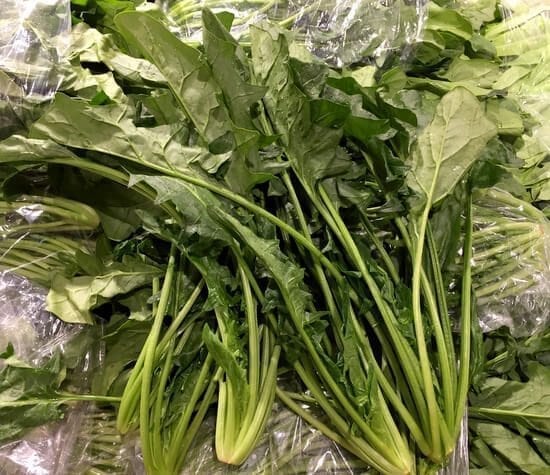
Taiwanese spinach is a dark green leafy vegetable with long stems. The stems are quite tender and packed with flavor and nutrients! Taiwanese spinach tastes similar to regular spinach, but perhaps milder in flavor. We mostly stir-fry these, as they are very tender, but they can also be added to soups.
Malabar Spinach (木耳菜, Mù’ěr cài)
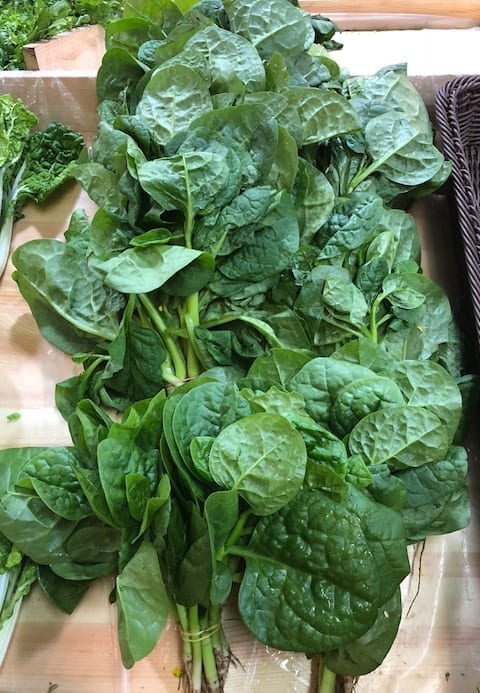
Malabar Spinach, or mù’ěr cài (木耳菜) in Mandarin, can be found in many parts of China, but is still rare in the U.S. and other Western countries. Mù’ěr cài translates to “wood ear vegetable,” and some varieties have red/purple stems. It is similar in texture to cooked okra, as it has that almost “slimy” texture in the succulent leaves. Other than that textural difference, it tastes similar to regular spinach and can be used in soups and in hot pot. Like other Chinese leafy greens, you can also simply stir-fry it with garlic, salt, and oil.
Amaranth (苋菜, Xiàncài)
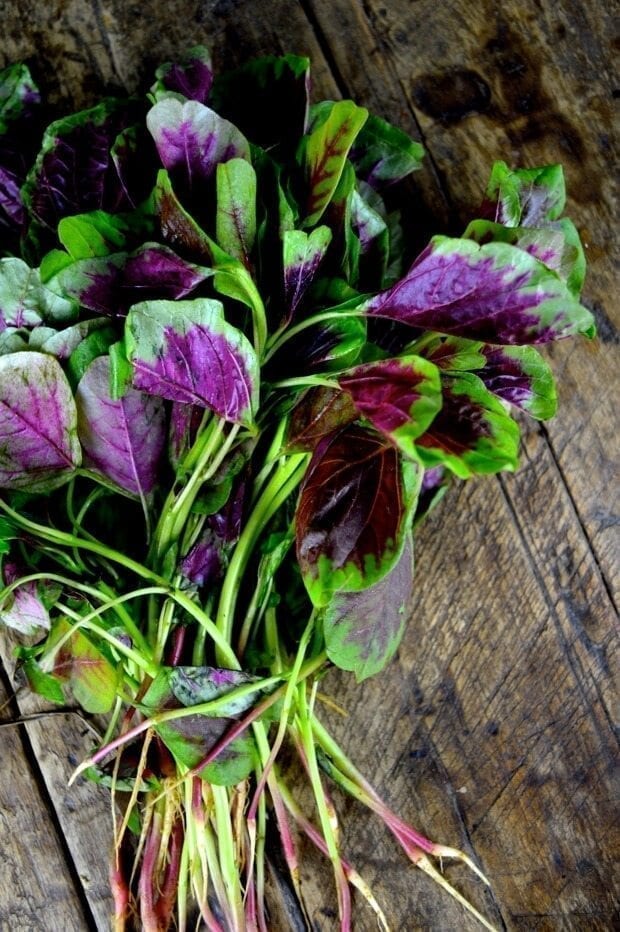
Known as hin choy in Cantonese, this leafy green is best stir-fried with garlic and salt. It’s similar to spinach. There are two kinds: one with a deep red/purple color in the center of the leaves, and the other a light green. The green variety can grow in the wild, at least in our experience! When Bill was young, his mother discovered it in her garden, and it just came back every year like a perennial. She called it “horse manure vegetables” or in the Hakka dialect, “ma see hen tsoy” because in China, these veggies thrived in manure piles! We’ve also grown it from seed in our garden.
Yam Leaves (地瓜苗, Dì Guā Miáo)
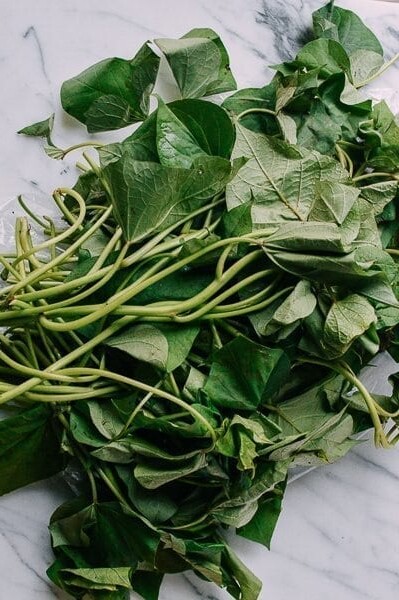
Sweet yam leaves, or sweet potato leaves, have a long string of nicknames in other parts of the world. “The queen of vegetables!” “The longevity vegetable!” “The anti-cancer vegetable!” With heart shaped leaves, long stems, and a mild flavor, they’re one of our favorite greens. They’re not considered a common Chinese vegetable, but they’re super healthy. If you can find them, give them a try with our recipe for stir-fried yam leaves. If you’re thinking of growing them yourself, be careful not to eat any potato leaves that contain toxic solanine!
Napa cabbage (大白菜, Dà báicài)
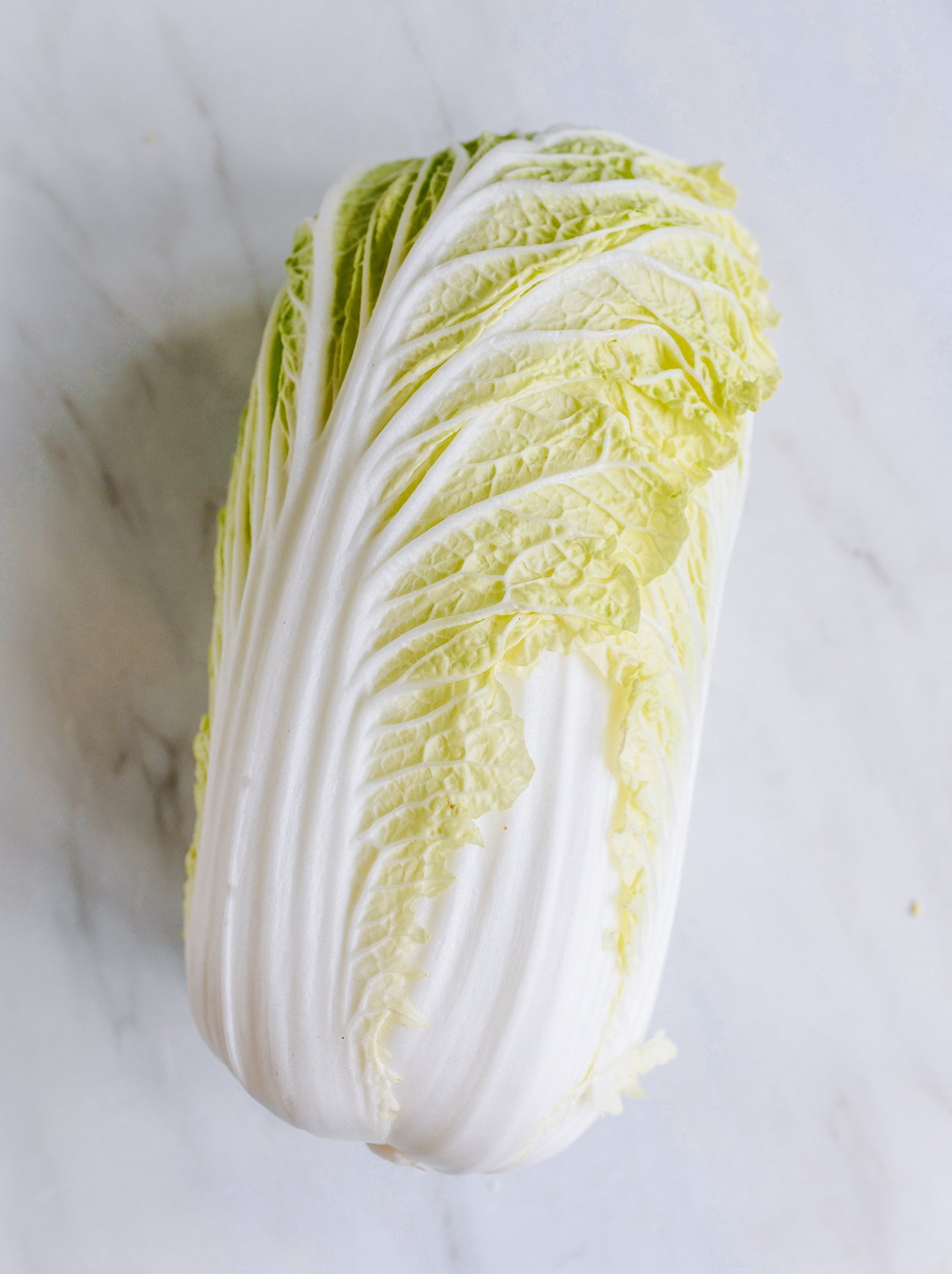
You can find Napa Cabbage in some mainstream supermarkets in addition to Chinese markets. Pick cabbages that feel firm, with bright, creamy white stems (no tiny brown or black spots). We use napa cabbage in soups, stir-fries, slaws, dumplings, noodle dishes, and more. The water content of this vegetable is quite high. When cooked, it has a pleasantly sweet and juicy taste to it. In Cantonese, my parents always used to refer to napa cabbage as “wong nga bok.” Learn how to grow napa cabbage in our garden/farm section!
Taiwanese Flat cabbage (高丽菜, Gāolí cài)
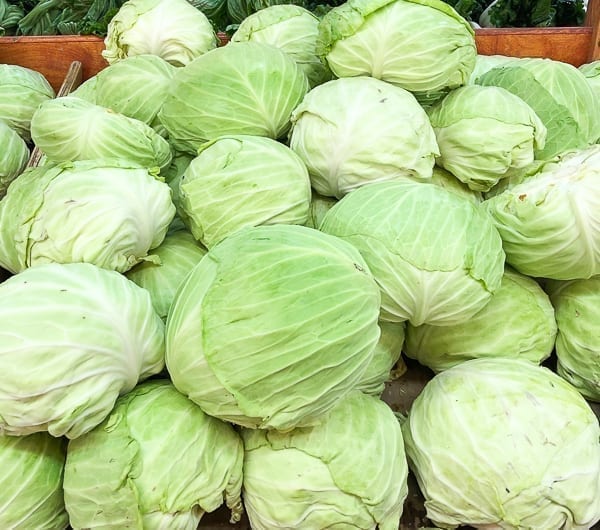
Taiwanese cabbage is a flat, loose-leafed variety! We always have one in the fridge. They taste much sweeter than regular cabbage, with a crunchier, more tender texture. Try it in your stir-fry dishes, and you’ll never look back! If you can’t find Taiwanese cabbage for one of our recipes, substitute regular green cabbage or savoy cabbage.
Chinese Mustard Greens (芥菜, Jiècài)
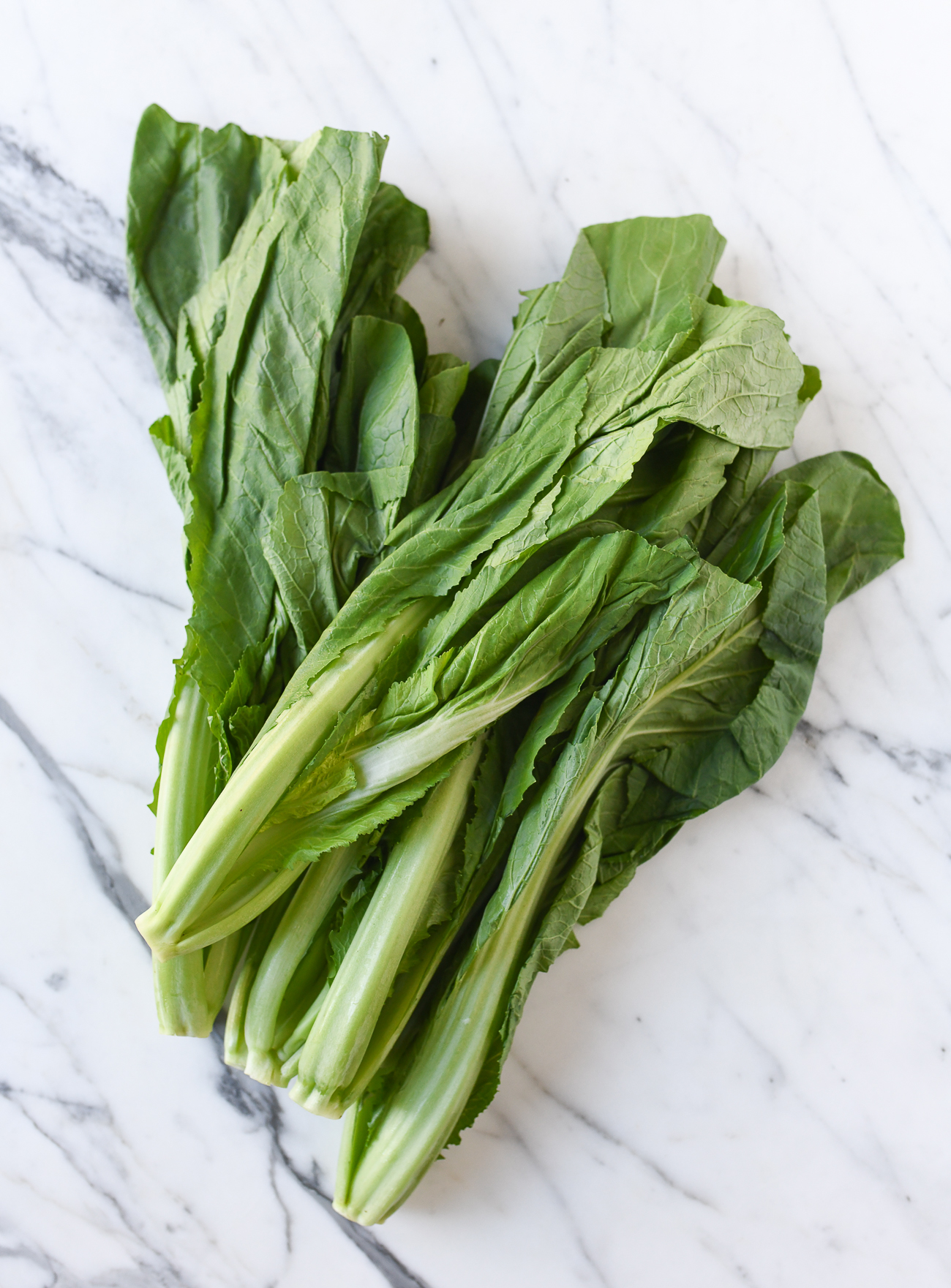
Chinese mustard greens, or jiè cài (芥菜) in Mandarin and gai choy in Cantonese, have been cultivated for centuries. There are many types, such as the leafy xuě lǐ hóng (雪里红) pictured left, as well as others, like head mustard and “large petiole mustard,” which are harvested for their thick stems (to be pickled and preserved). We have an extensive article about different types of Chinese mustard greens (with pictures!) and how they’re used. Check it out to learn more about this versatile vegetable!
Watercress ((西洋菜, xī yáng cài)
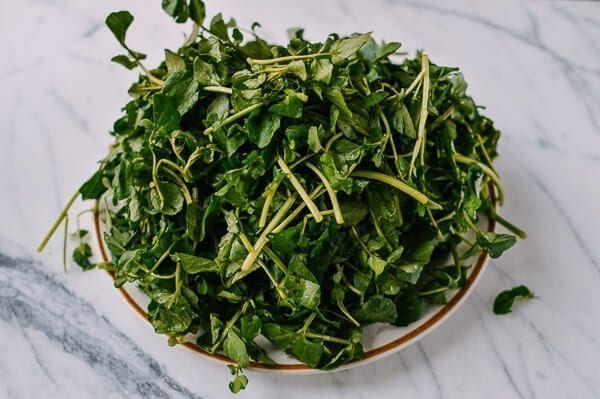
Watercress (sai yeung choy in Cantonese) is available at many grocery stores. While it’s common in salads, sandwiches, and other raw applications in Western cooking, in Chinese cuisine, it’s stir-fried, added to soups and dumpling fillings, and used in other cooked applications.
Pea shoots or pea tips (豌豆苗, wān Dòu miáo)
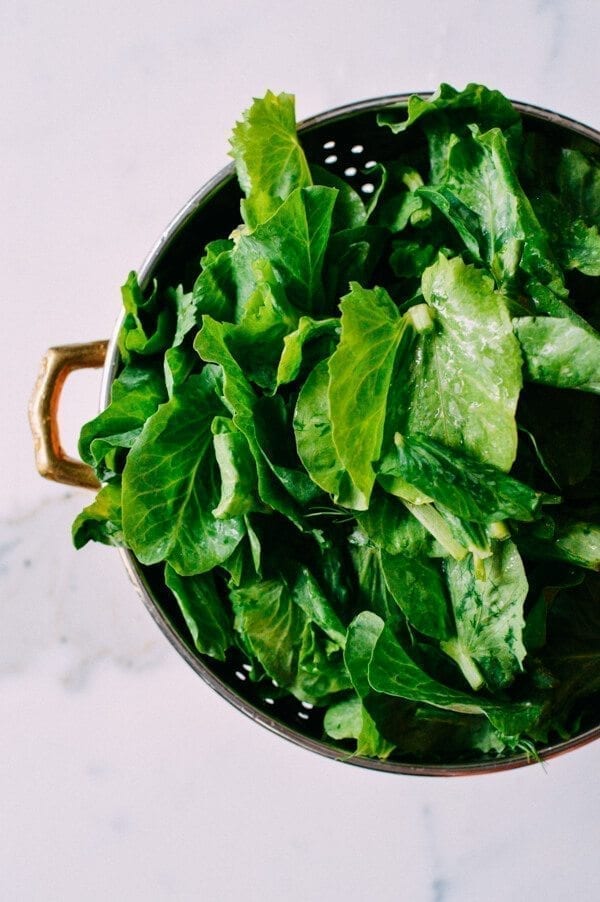
These are the tender leaves of snow pea plants, which have a sweet, mild pea-like flavor. Having grown in popularity over the last several years, they’re readily available these days in many restaurants and Chinese markets. “Pea leaves” is probably the most accurate description for this veggie. Try our basic Stir-fried Pea Leaves with Garlic, as well as our Pea Tips with Seitan Puffs, which is a super tasty vegetarian dish where you won’t miss the meat. These veggies can be pricey, so we tried growing them in our garden—you can get seeds online!
Shepherd’s Purse (荠菜, Jìcài)
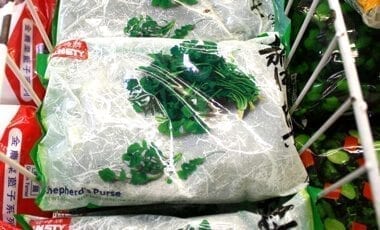
Shepherd’s purse is a wild vegetable eaten mainly in and around the Shanghai area. It’s only available frozen here in the U.S., but we’ve heard that it grows as a weed in some areas! We use it in dumpling fillings, soups like our Shepherd’s Purse Tofu Soup, and rice cake stir-fries.
Tong Ho – Edible Chrysanthemum leaves (茼蒿, tóng hāo)
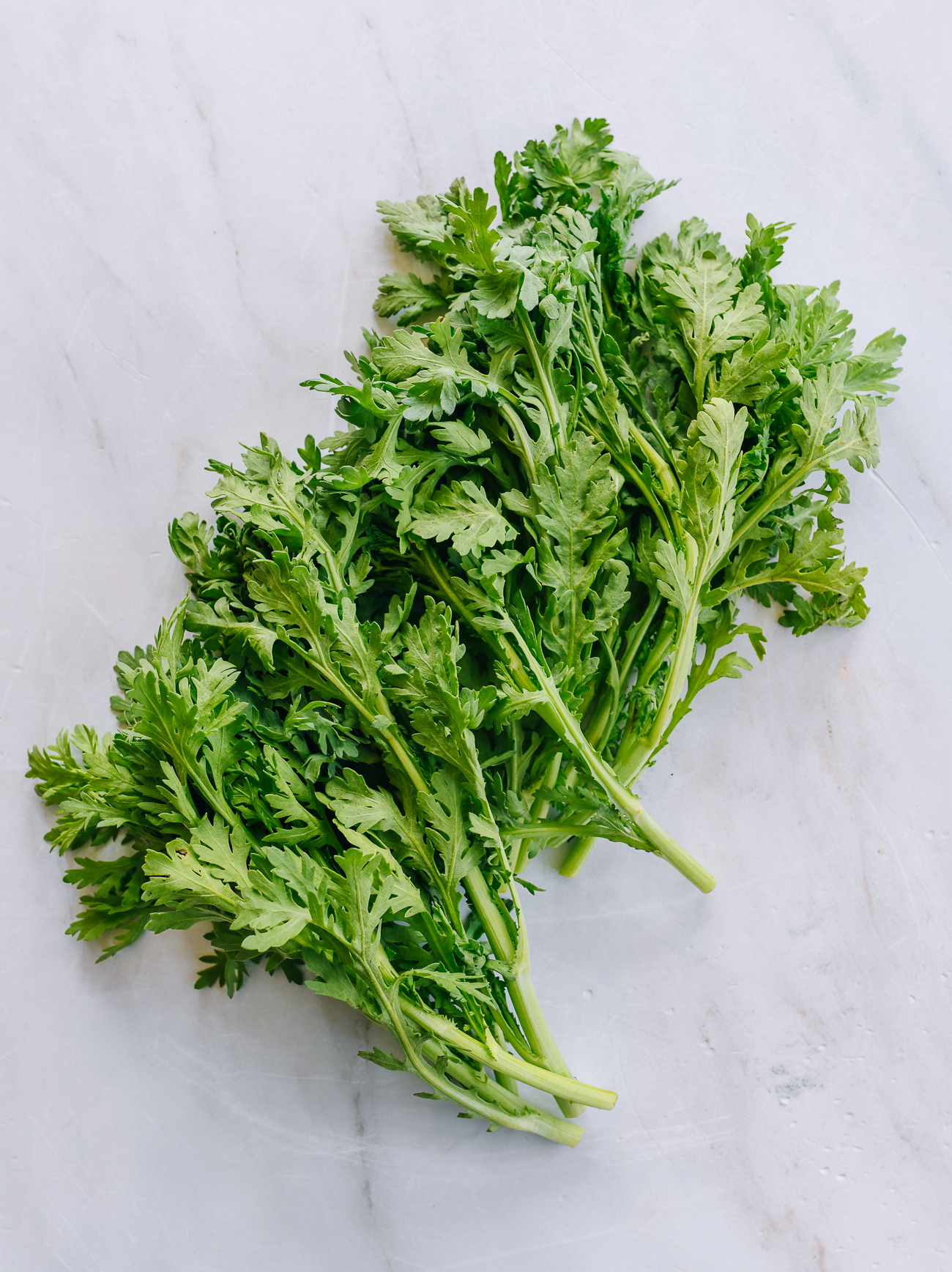
Edible Chrysanthemum, or tóng hāo (茼蒿) and tong ho in Cantonese, comes in two main varieties. One has small serrated leaves and long stems (pictured left), and the other has rounded wider leaves with much shorter stems. Tong ho has a unique, aromatic, and bitter flavor, and is often used in hot pots (it’s a key ingredient in Sarah’s Sukiyaki Japanese hot pot). You can also stir-fry it. From our experience, the broad leaf variety has a stronger aromatic flavor than the smaller leaf variety.
MaLanTou (马兰头, Mǎlán tóu)
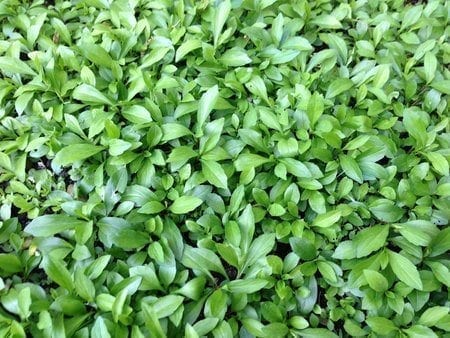
Ma lan tou (马兰头) is a flowering perennial and a favorite vegetable of the Shanghainese—particiularly in this classic malantou recipe. Young leaves and stems collected in early spring are considered a delicacy, with a flavor similar to chrysanthemum leaves. This one is rare the U.S., but you may be able to get your hands on seeds!
Cao Tou – Edible clover (草头, cǎo tóu)
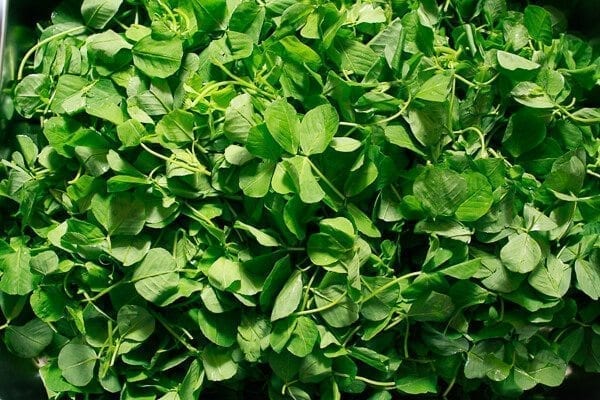
This is an edible version of those familiar clovers you see growing in the grass! It has a sweet, lightly grassy flavor, and we’ve only seen it in China. Enjoying it at a restaurant inspired our recipe for Sautéed Clover, which is why we’ve included it here!
Bing Cao – “Ice Grass” (冰草, Bīng cǎo)
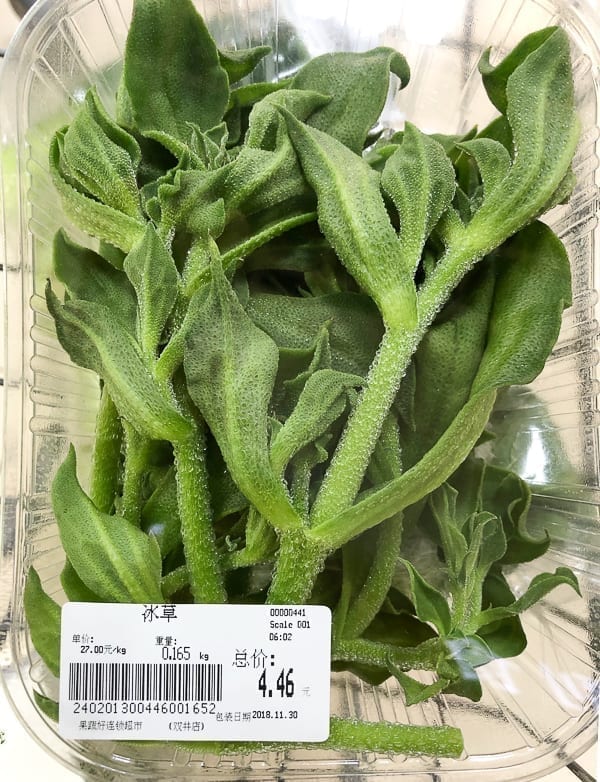
This is an unusual vegetable we encountered in China. It may also be called bīngcài, or “ice plant” or “ice greens.” It owes its name to the beads of what looks like frozen water on the leaves and stems. We had them for the first time at a restaurant in Shanghai. They were served raw in a salad with a sesame sauce as a cold appetizer, and the texture was crunchy, fresh, and full of moisture, with a very mild flavor. Nearly impossible to find these in the U.S., but we wanted to share them here!
Ji Mao Cai – “Chicken Feather Vegetable” (鸡毛菜, Jīmáo cài)
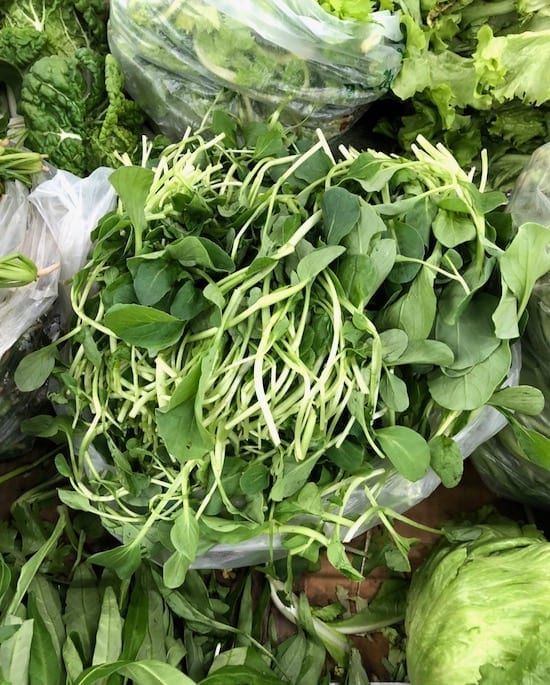
A common vegetable found in markets around China, it is generally not readily available here in the U.S. It is thin and gangly, and resembles bok choy—if it were picked when very young. They do kind of look like chicken feathers, with their thin quill-like stems and small leaves. Both the leaves and stems are super tender, and you will find them served in China stir-fried at high heat in garlic, salt, and lots of oil. They’re delicious!
Mushrooms & Fungi
Shiitake Mushrooms (香菇/花菇/冬菇, Xiānggū/huā gū/dōnggū)
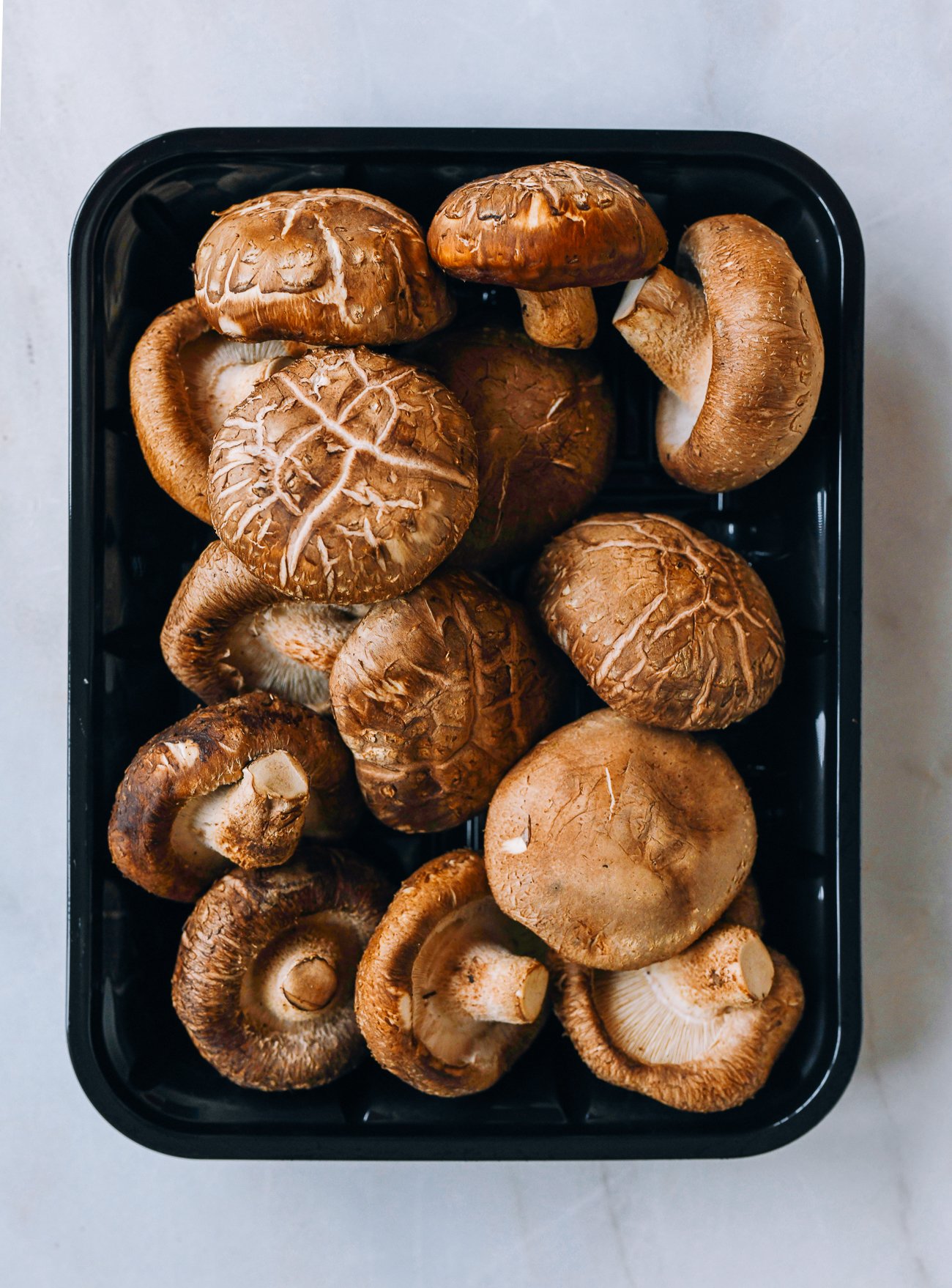
Shiitakes are widely used across Asia. Some have smooth caps, which are generally considered “lower quality” but have a less rubbery texture than the sought-after mushrooms with cracked tops, known in Chinese as 花菇, or flower mushrooms. We use whatever we can get fresh at the Chinese market. They add umami to many recipes, like our Braised Mushrooms with Bok Choy and Steamed Chicken with Mushrooms & Dried Lily Flower. They’re commonly used dried, as dried shiitakes have a very intense flavor when reconstituted.
King Oyster Mushrooms (Xìng bào gū, Xìng bào gū)
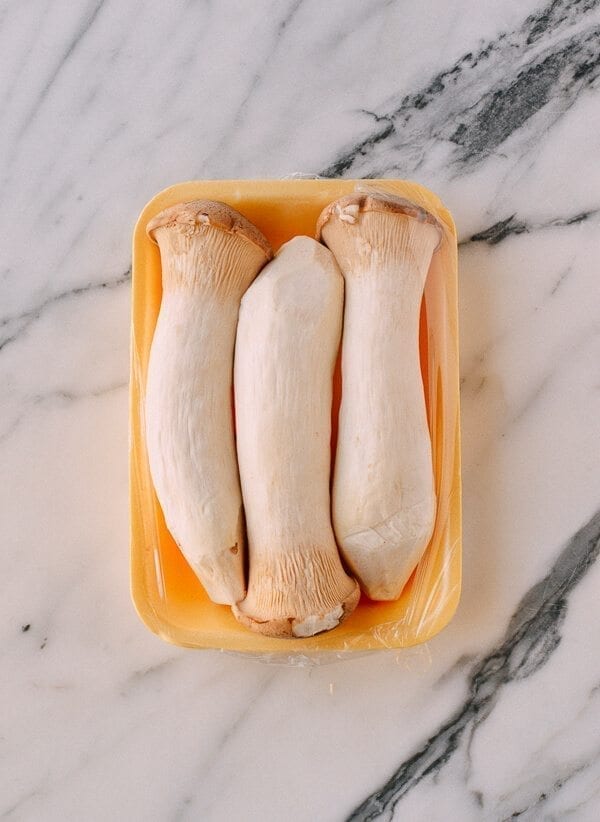
King Oyster Mushrooms, also known as Royal Trumpet Mushrooms or King Trumpet Mushrooms, have a meaty texture to their enormous stems and a subtle mushroom flavor. This makes them well-suited to recipes in which they play the role of a protein substitute, as in our Spicy King Oyster Mushroom Stir-fry, Kung Pao Mushrooms, or our King Oyster Mushrooms with Garlicky Glass Noodles. You can pay-fry stir-fry, braise, steam or grill them. Find them in Asian markets and specialty groceries.
Oyster Mushrooms (平菇, Píng gū)
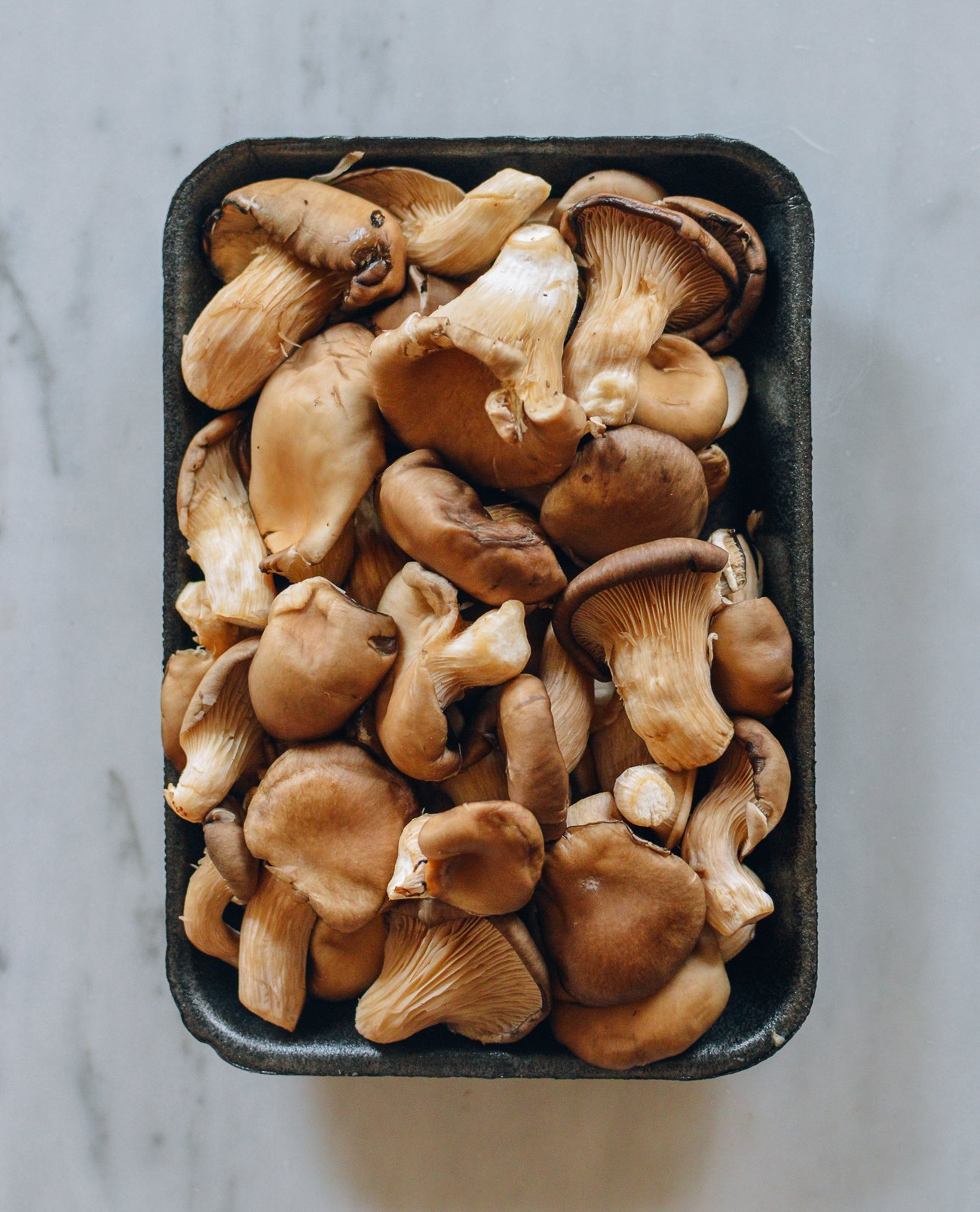
Oyster mushrooms live up to their name. They have an incredible umami flavor that’s vaguely reminiscent of seafood. We think they’re more tender and succulent than shiitake mushrooms, and they can be minced, torn, or kept in large chunks—equally as delicious caramelized as they are seared, braised or deep-fried. Just dust off any debris with a clean dish towel before cooking. Try them in our Spicy Hunan Steamed Tofu with Oyster Mushrooms.
Enoki Mushrooms (金针菇, Jīnzhēngū)
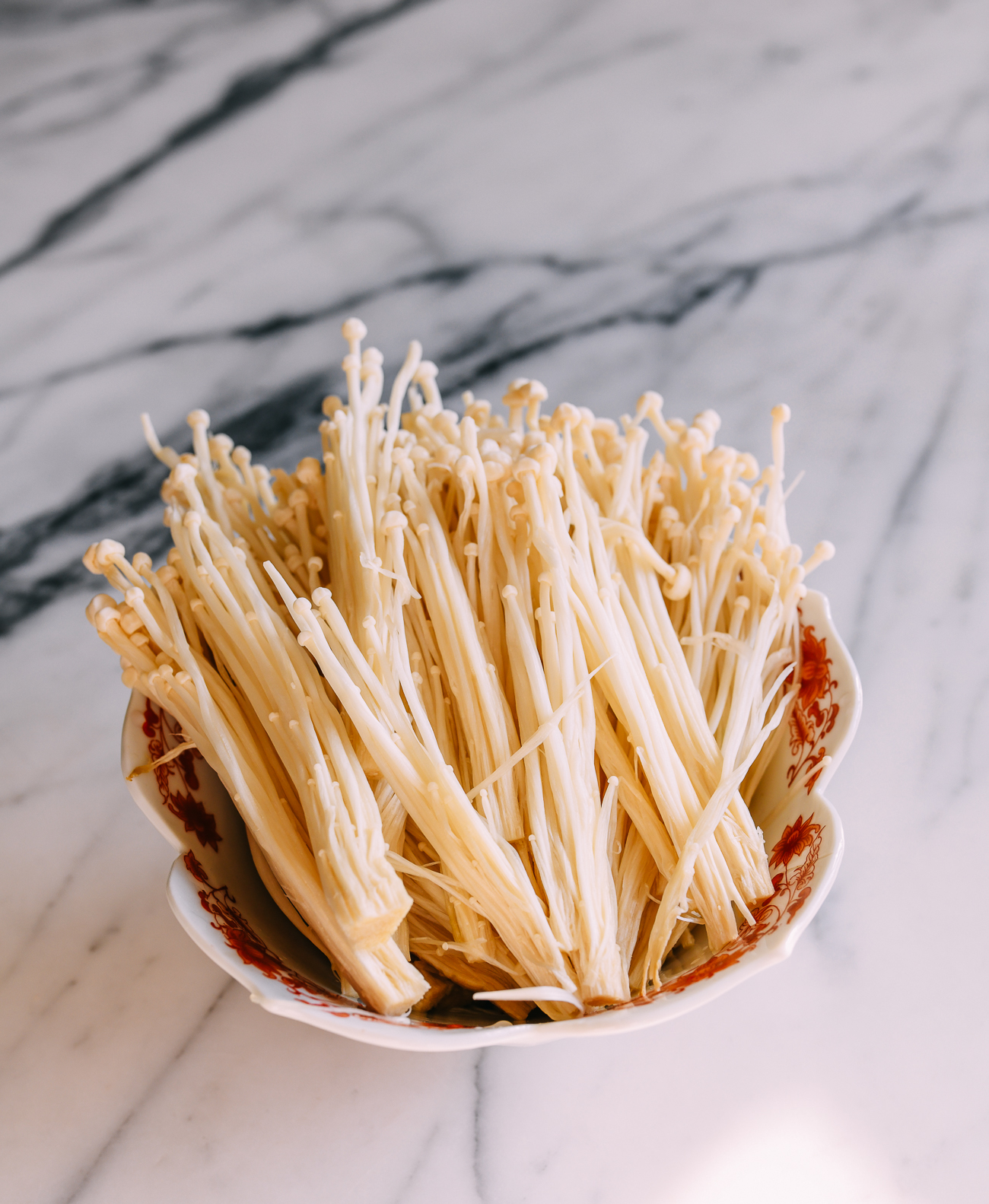
Enoki mushrooms, AKA golden needle mushrooms or jīn zhēn gū (金针菇) have a crisp texture and very small caps. You can find them fresh in Asian grocery stores, as well as canned for use in stir-fries and soups. Because they have such a mild flavor, you can pretty much add them to whatever you want for added texture! If you’ve never had them, try our Enoki Mushrooms with Garlic & Scallion Sauce (where they’re the star of the dish) to get an idea of what they’re like.
Seafood Mushrooms (海鲜菇, Hǎixiān gū)
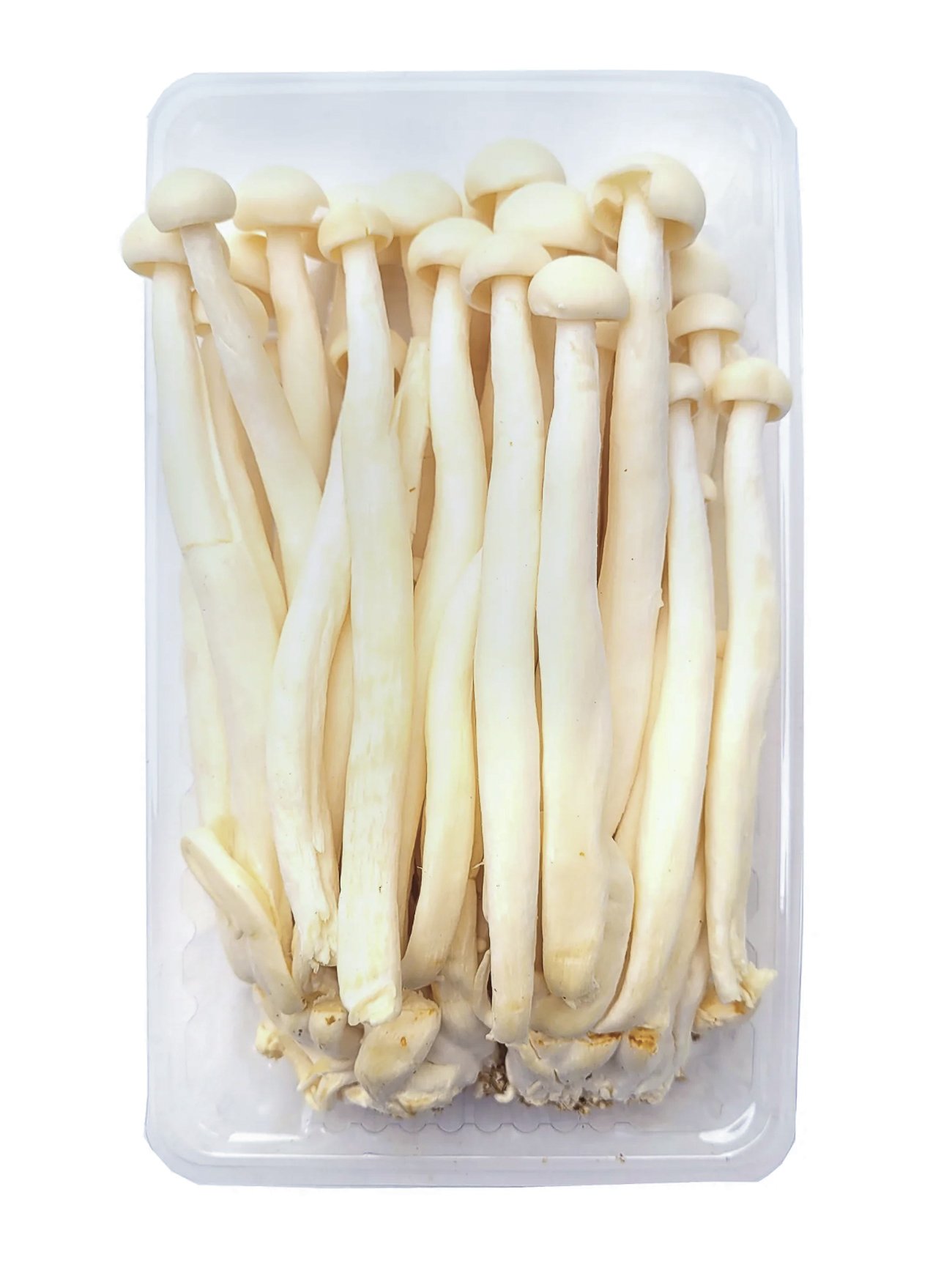
If oyster mushrooms have a faint seafood flavor, then these seafood mushrooms have an even more pronounced seafood taste! They’re like enoki mushrooms, but with thicker stems and larger caps. You can find them in small plastic packages in Asian markets. Use them any kind of soup or stir-fry. You could even add them to braised dishes. A similar variety is the white beech mushroom, AKA hon shimeji mushrooms.
Straw Mushrooms (草菇, cǎo gū)
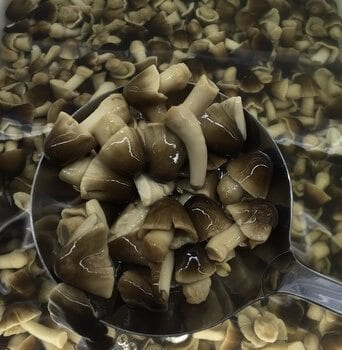
Straw mushrooms are usually found in a can, and they were once very common in American Chinese restaurants. Their flavor and slightly crunchy texture make them delightful as an ingredient in a stir-fried meat and vegetable dish. They look more like small quail eggs when they are young and fresh, but when they develop further and open up, they take on their characteristic umbrella shape.
Wood Ear Mushrooms (木耳, Mù’ěr)
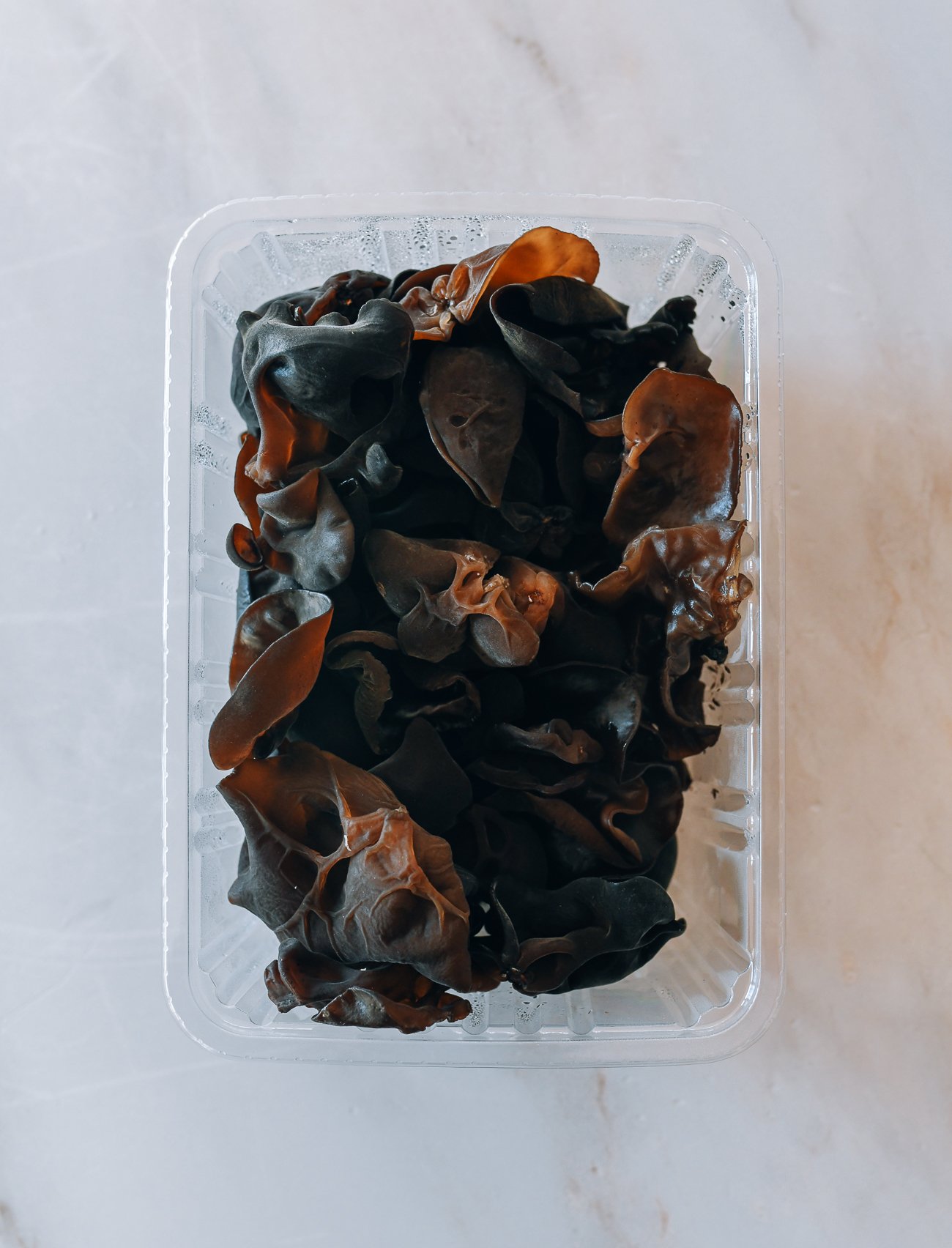
Wood ear mushrooms (they grow on tree bark) are usually sold dried, which is why we also included them in our dry ingredients section). We wanted to also include them here, because we use them in so many stir-fries, soups, braises, salads, and more. You can find them fresh in well-stocked Chinese grocery stores. They can be more expensive than the dried version, but have the advantage of having a more tender texture and don’t need any soaking before use.
Tea Tree Mushrooms (茶树菇, chá shù gū)
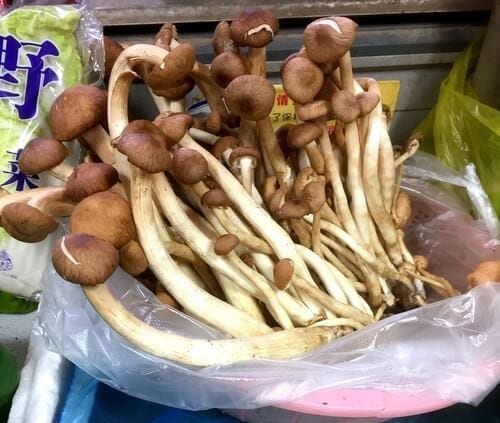
Fresh Tea Tree Mushrooms or chá shù gū (茶树菇) are much more common in China than in the U.S., where you can usually only find them dried. They have a strong, yet delicate flavor and are super tasty in stir-fries, soups, and stews!
Root Vegetables
Daikon radish or “Chinese Turnip” (萝卜, Luóbo)
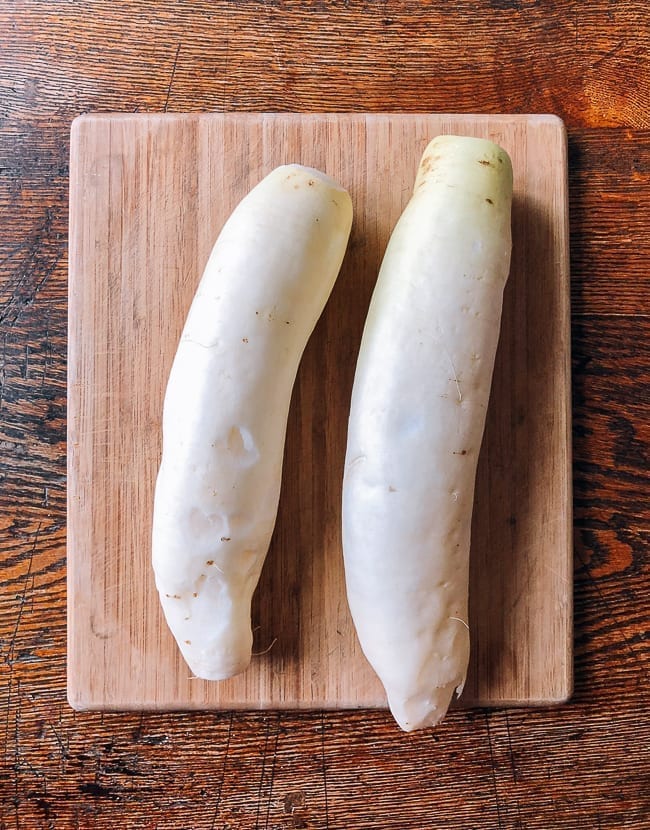
Daikon radish (also sometimes translated as “Chinese turnip”) is a thick elongated white radish, usually 8-12 inches long and about 3-4 inches thick. Eaten raw, it has a spicy flavor that becomes quite mild when cooked in soups, braises, or stir-fries. Fair warning: they do have a strong aroma that will fill your kitchen when cooked (just ask anyone who’s made our Turnip Cake/Lo Bak Go). Look for a heavy, firm radish with fresh green stems and shiny white skin free of spots and blemishes.
Lotus Root (莲藕, Lián’ǒu)
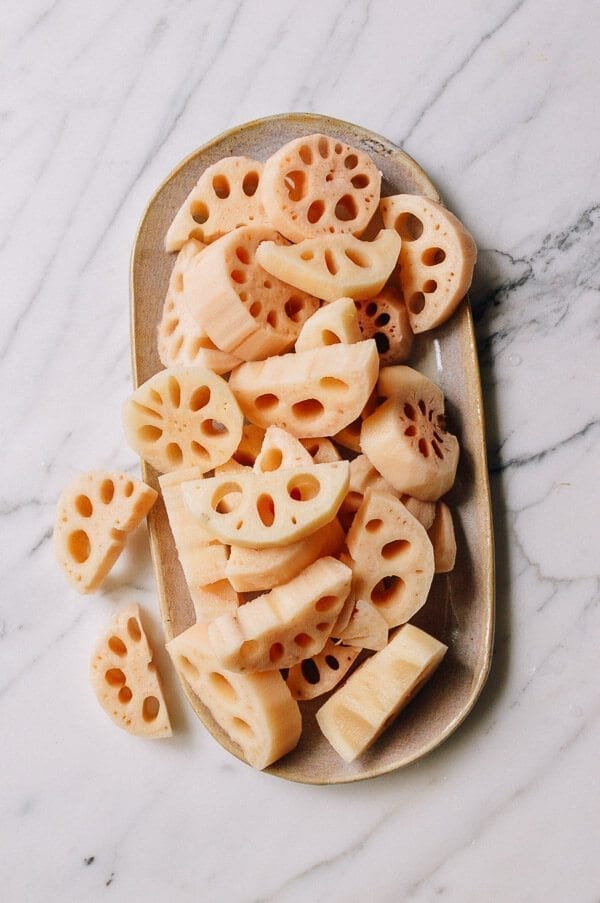
These are the roots of the lotus plant, growing deep at the bottom of muddy ponds. Harvesting these long, unwieldy roots is an extremely labor-intensive process that must be done by hand. So don’t waste it! The roots are long, and cream-colored, connected in segments that are broken apart for sale. They have hollow piping running through them, which gives sliced lotus root the appearance of a wagon wheel. Peel with a vegetable peeler and rinse them before slicing or cutting into chunks to use in stir-fries, soups, and recipes like our Crispy Stuffed Lotus Root.
Taro (芋头, Yùtou)
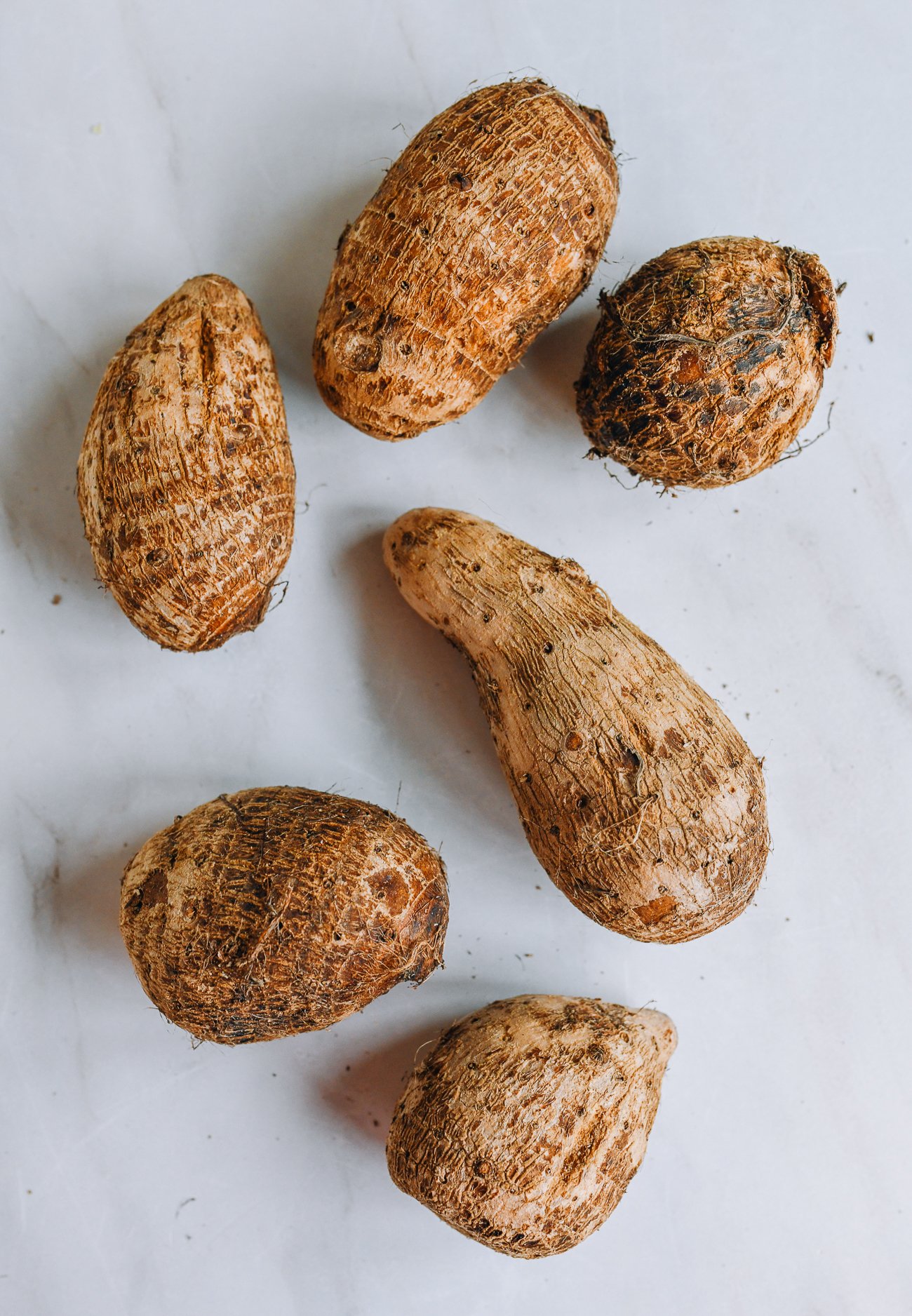
Taro has a consistency similar to a potato, with an even more buttery flavor and texture. There are two types: large tubers the size of a football that are super starchy, and small potato-sized ones that have an almost slippery, gummy texture (pictured left). We use large taro most often in our recipes. When choosing taro, look for firm and heavy specimens. Small taro can be steamed whole and then peeled, but we usually peel off the skin using a vegetable peeler before cooking. Handling them may cause some skin irritation, but it’s never happened in our experience.
Chinese Yam (山药, Shānyào)
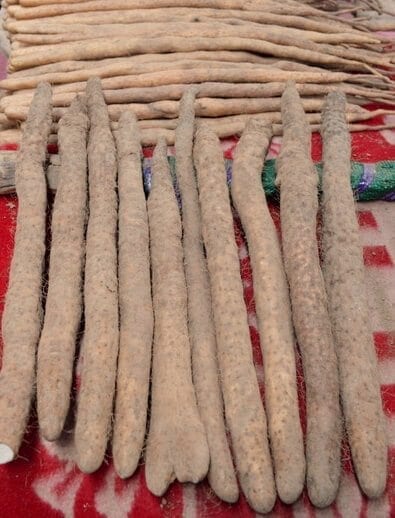
Chinese yam, known as shān yào (山药) or huái shān (怀山), is found in practically all vegetable markets in China and recently in Chinese grocery stores in the U.S. as well. You may see it sliced thinly and stir-fried, or most commonly, in soups. Its name translates to “mountain medicine,” and it is considered very healthy. It has a slightly mucilaginous texture when cooked (that slimy or gooey mouthfeel you get with okra), which takes a little getting used to, but we like to put it in soups for the health benefits!
Arrowhead Root (慈姑, cí gū)
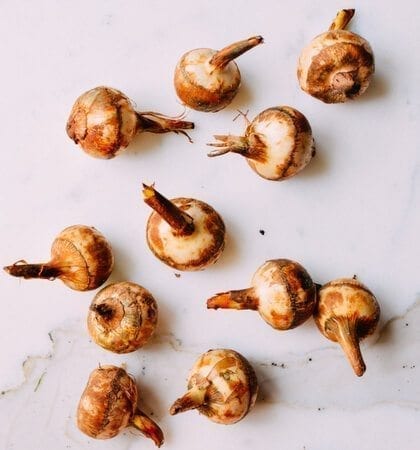
Arrowhead root or cí gū (慈姑) is one of those strange vegetables that we eat only once or twice a year. But every time we have it, we wonder why we don’t cook them more often! They’re a symbolic Chinese New Year food that people cook to represent fertility. They have a unique flavor and texture that grows on you—similar to a water chestnut but with the texture of a potato.
Melons, Squashes & Loofahs
Bitter Melon (苦瓜, Kǔguā)
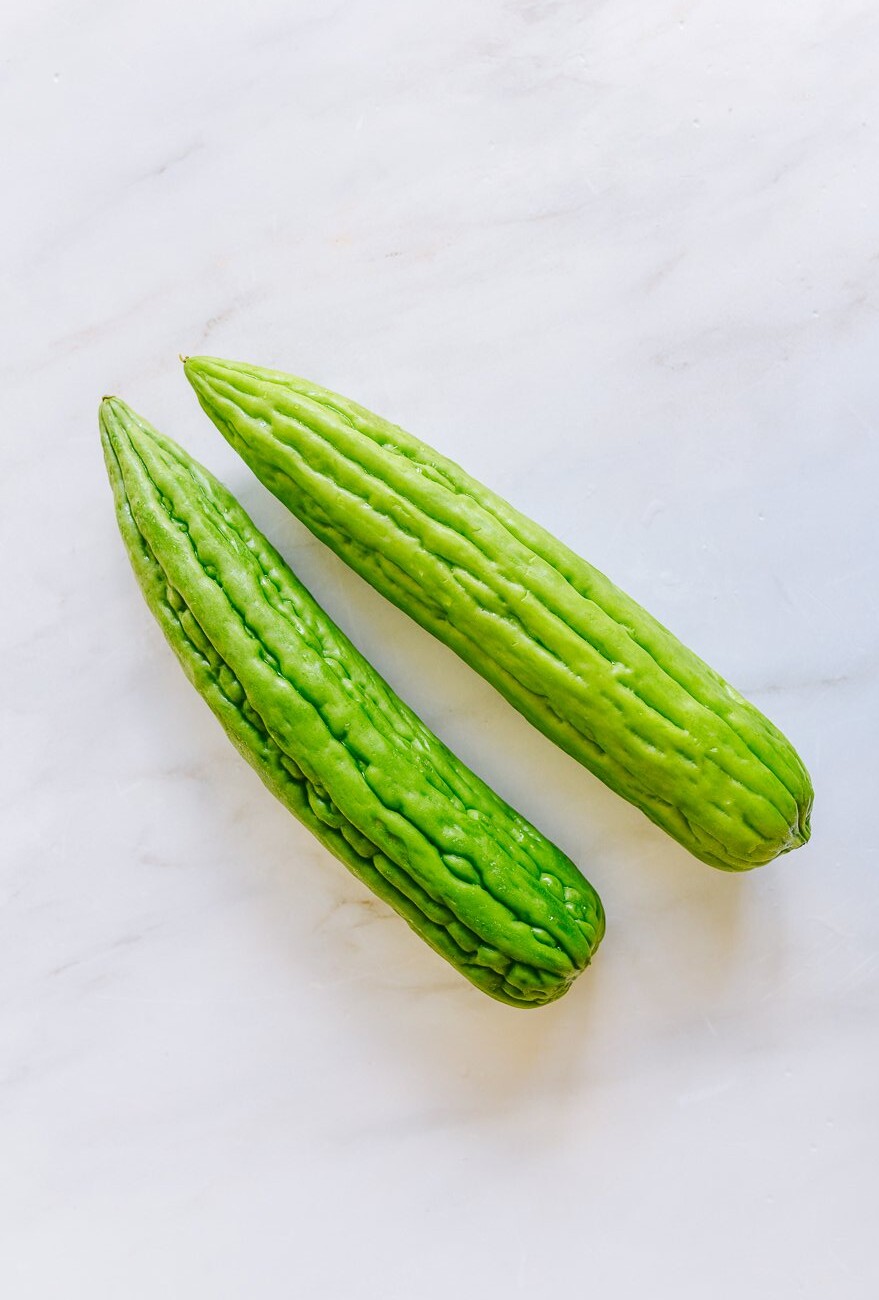
Bitter melon is a curious summer gourd with light green, thick, ridged, bumpy skin. It has a strong bitter flavor that some—well, many—don’t exactly love. Bitter melon goes by a couple of Chinese names including kǔ guā (苦瓜)—literally, “bitter melon,” and liáng guā (凉瓜) or “cool melon.” Chinese call it “cool melon” not because it’s hip to the groove, but rather because it is a “cooling” food in traditional Chinese medicine parlance. You can blanch it before cooking to reduce the bitterness, but oddly enough, everyone in the family loves it, and we grow it every year!
Winter Melon (冬瓜, Dōngguā)
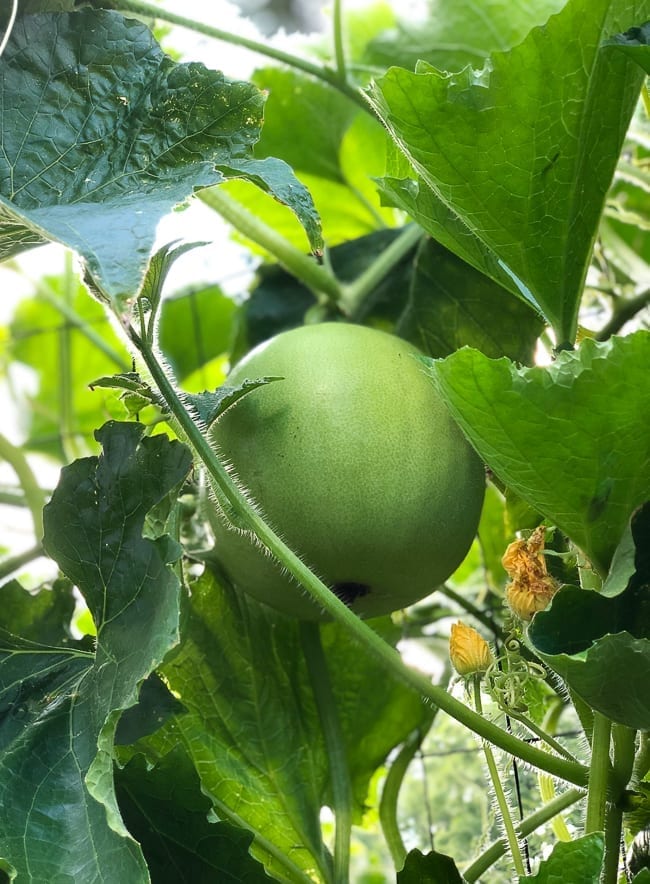
Winter melon, or dōng guā (冬瓜), is a type of squash or gourd that comes in many shapes and shades of green rind. The inside flesh is white and faintly sweet. Honestly, winter melon isn’t the most flavorful melon you can grow! It’s usually used for texture, whether it’s in pork bone soups, or in fillings for Chinese desserts like wife cakes (lǎopó bǐng – 老婆饼). We’ve grown winter melon in our garden (that’s our plant, pictured left!), and our favorite recipe to make with it is Judy’s Winter Melon Meatball Soup.
Ridged Loofah (丝瓜, Sīguā)
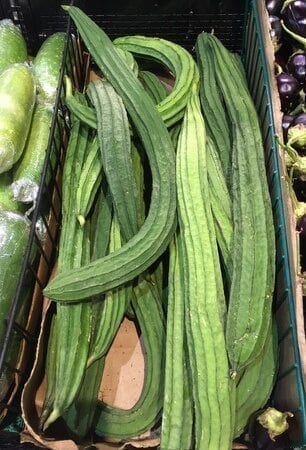
Angled luffa, Chinese okra, and ridged gourd are all names we’ve seen for this ridged loofah. It is usually cooked in soup, sometimes with fried tofu or wheat gluten, and sometimes stir-fried with eggs, chicken, or pork. It has a rough skin, so it’s best to use a knife to cut away the outer skin before cooking. The inside is very light and soft, cooking down to an extremely tender texture. We grew this in our garden with great success and hope to cook more with it in the future!
Sponge Loofah (丝瓜, Sīguā)
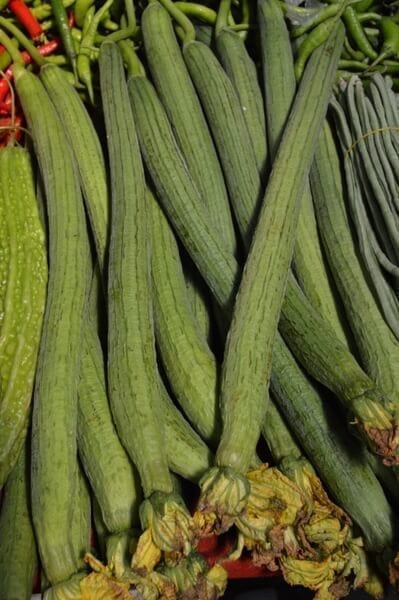
This smooth Chinese sponge luffa is also referred to as sī guā (丝瓜), but it’s a different variety. Similar in taste and texture to ridged luffa (above), it’s a bit more tender. It’s also easier to prepare, since it doesn’t have those tough ridges that need to be meticulously cut away. In China, it’s actually preferred over the ridged luffa. If left to grow on the vine, it gets so large and tough that you can actually dry it out and use it as a natural sponge! That aside, it is good eating when harvested at the right time (though we would understand if you wanted to try and cut down on sponge costs).
Chinese Long Squash (瓠子, Hùzi)
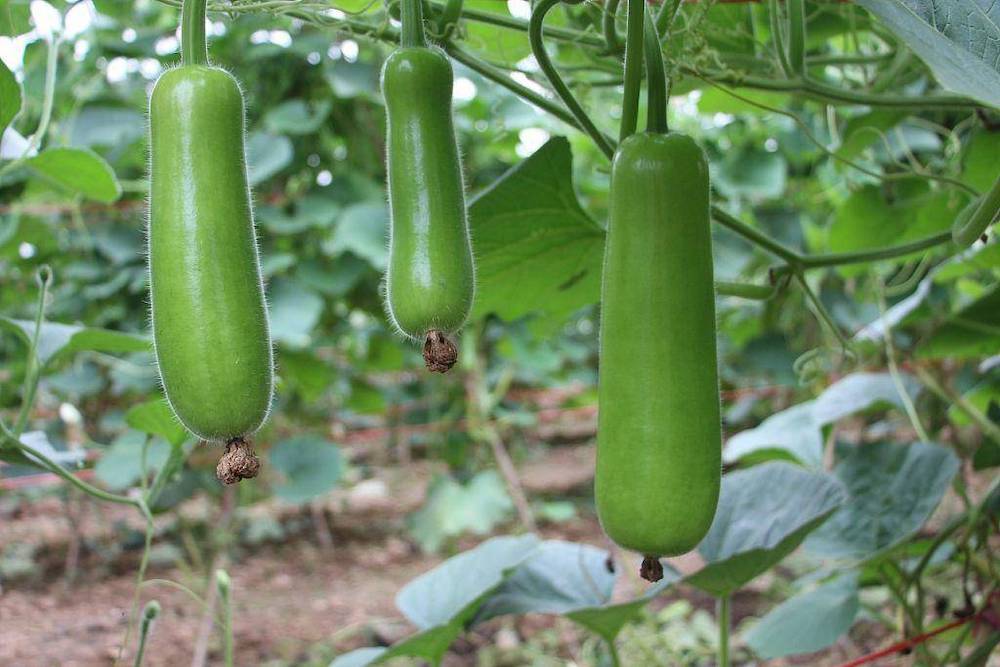
With one plant, you can harvest dozens of these Chinese long squash. They’re quite tender, as long as they’re harvested small (less than 12 inches long). They’re similar to zucchini in texture, but even milder in taste. Use it in our recipe for Vegetable Noodles with Shrimp.
Miscellaneous
Chinese Eggplant (茄子, Qiézi)
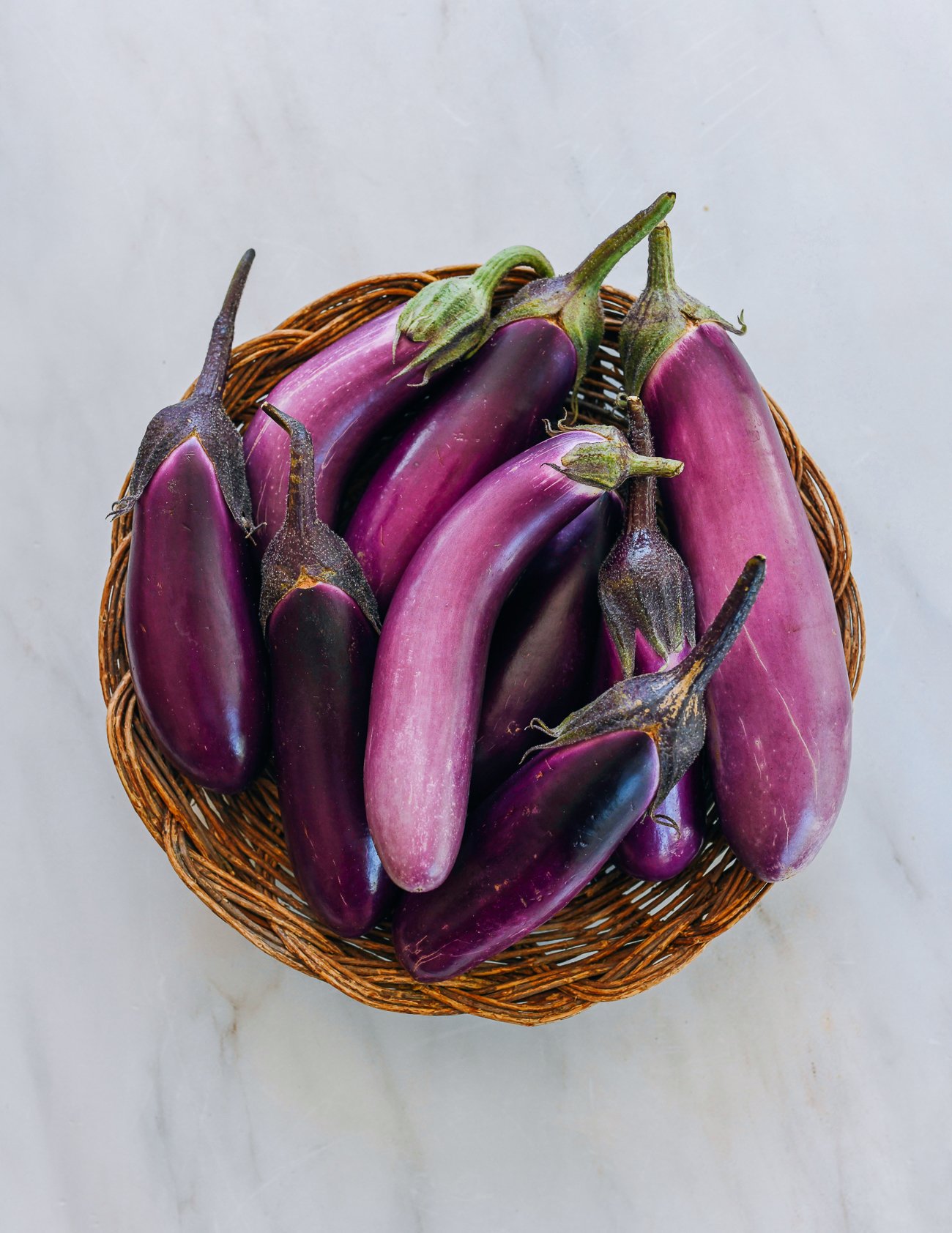
We prefer the long, thin Chinese (or Japanese) eggplant over regular globe eggplants. The skin is thinner (no need for peeling!) and the flesh is more tender, with fewer seeds (better texture and flavor, with less bitterness). Chinese eggplants are generally the light purple varieties, while Japanese eggplants are darker purple—they can look almost black. Both can be used interchangeably. Look for unbruised, heavy, and firm eggplants at the store.
Flowering Cauliflower (有机菜花, Yǒujī càihuā)
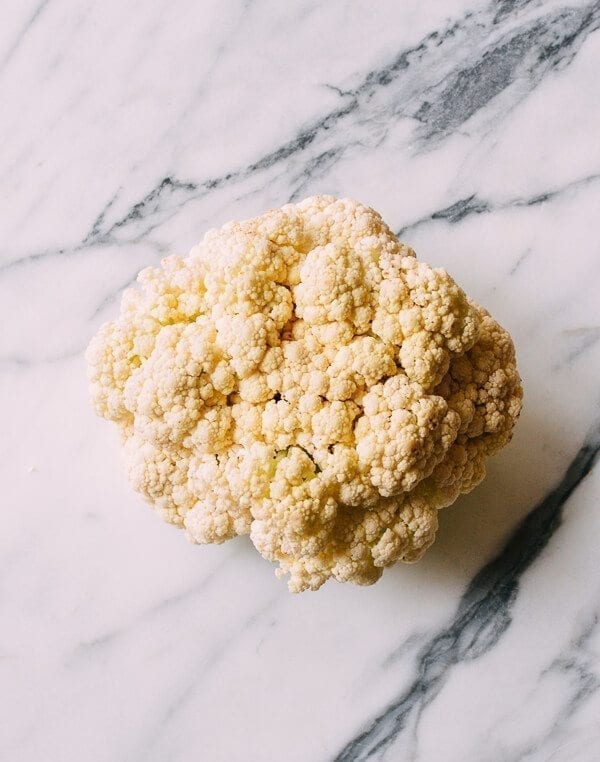
Known as flowering cauliflower, fioretto cauliflower, Taishan cauliflower, or simply Chinese cauliflower, this is a delicate variety with thinner stalks and more tender buds. It’s not as perfectly round as the supermarket variety, and it’s no surprise that it’s far and away the preferred option for Chinese cooking, as its stalks are tender and sweet, and cook faster and more evenly in a wok! Find it at Chinese grocery stores, and try it in our Dry Pot Cauliflower recipe.
Chinese Celery (芹菜, Qíncài)
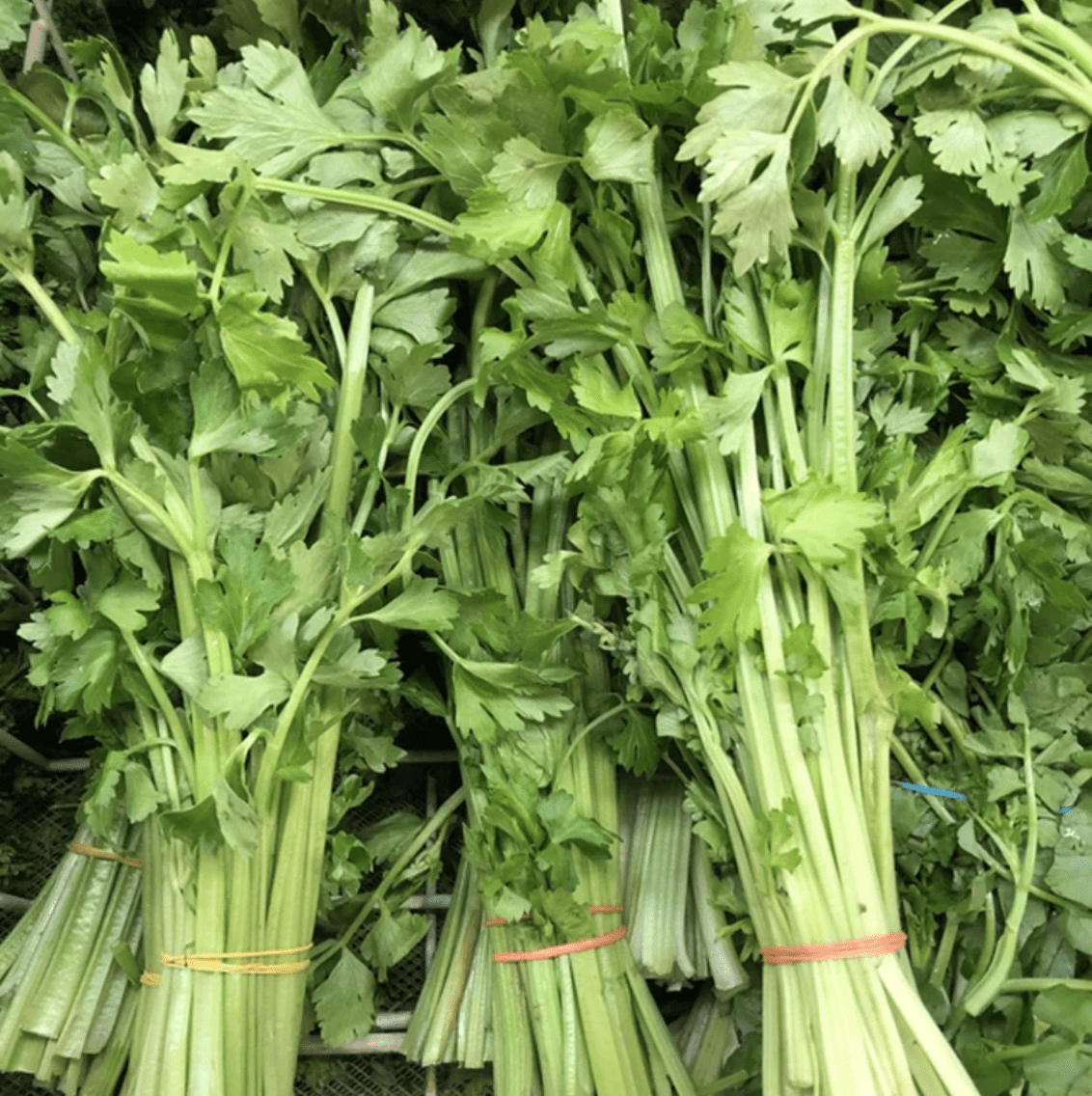
Chinese and Western celery are both called qín cài (芹菜) in Mandarin and kun choy in Cantonese, but they’re different! Chinese celery, or leaf celery, is longer and thinner, with a very strong celery flavor. It’s also more fibrous, so it’s usually sliced into smaller pieces for stir-frying or finely chopped for dumpling fillings (celery dumpling recipe here!) and cold appetizer dishes. The leaves are bitter but can be used as an herb. As with Western celery, it’s mostly about the stalk.
Celtuce (莴笋, Wōsǔn)
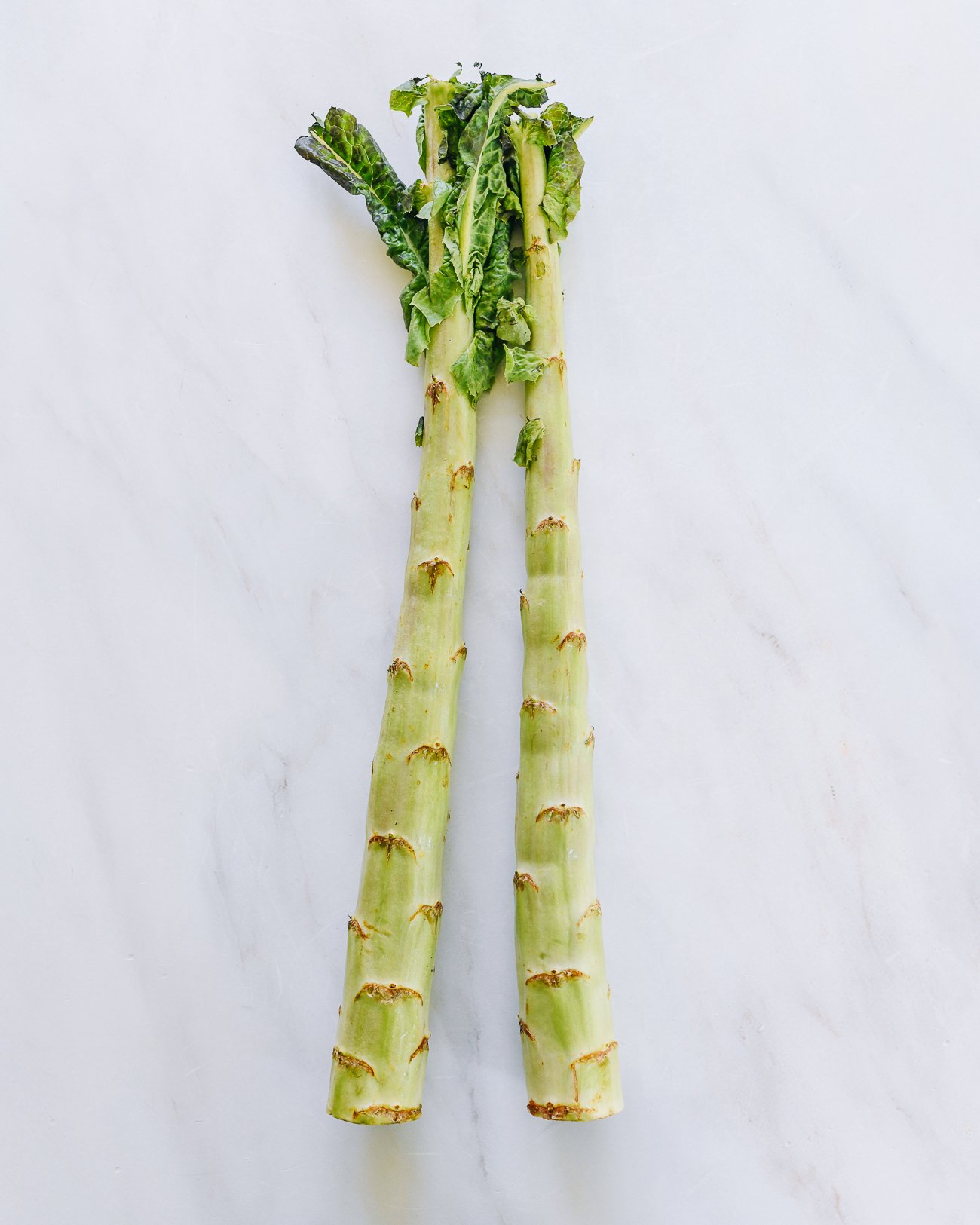
Also known as stem lettuce or asparagus lettuce, this vegetable is the overgrown stem of AA choy (see leafy greens section above). You can find it pretty easily in Chinese markets these days. Peel away the tough outer skin from the long stem, then slice/julienne it and stir-fry! The flavor is subtle, and you have to pause to realize that you’re tasting a concentrated lettuce flavor. Try it in our Celtuce Stir-fry with Wood Ear Mushrooms or Celtuce Salad with Scallion Oil.
Chinese Garlic Chives (韭菜, Jiǔcài)
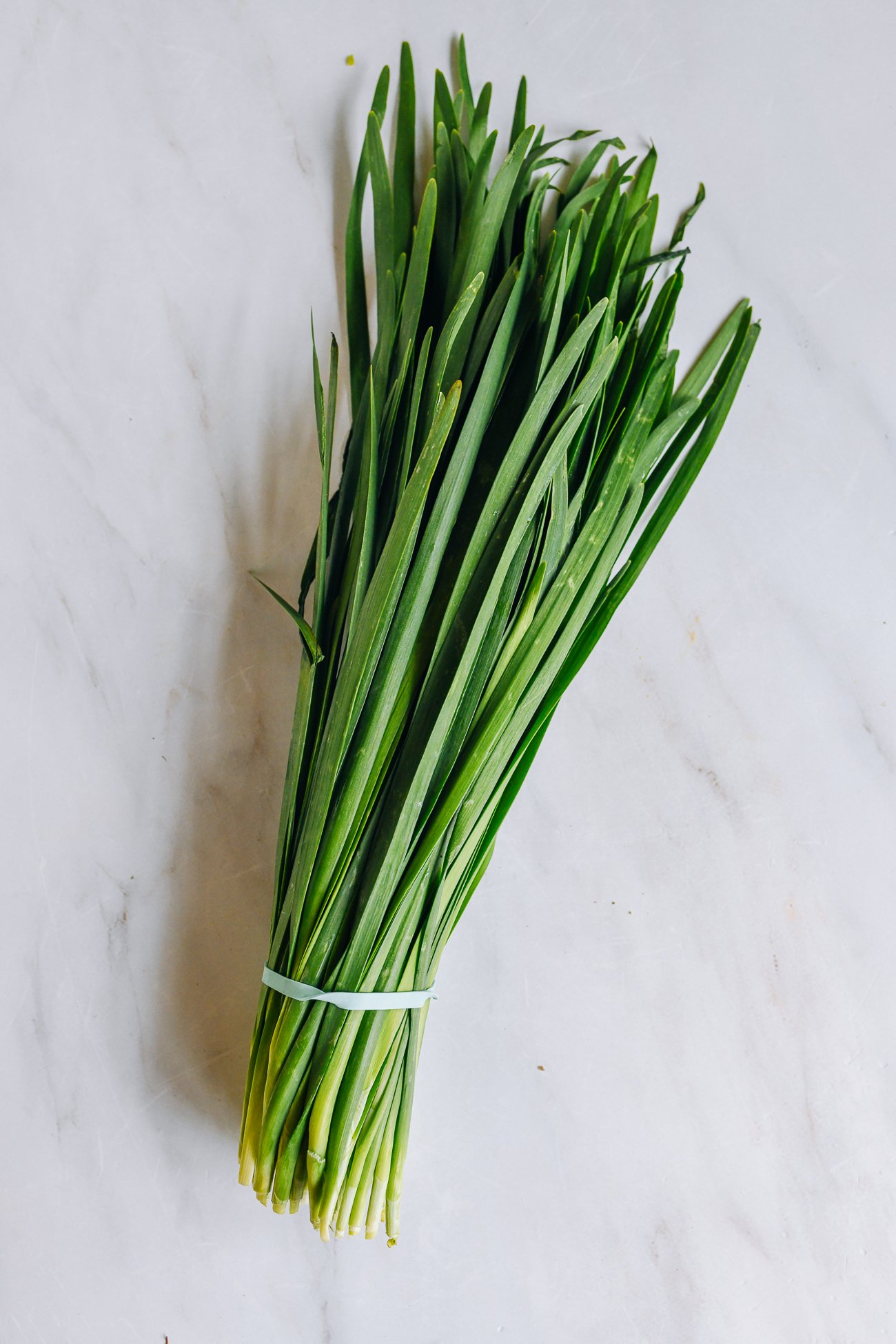
While this ingredient is also included in our Herbs & Aromatics category, we’ve also included them here, because they’re often used as a vegetable—in larger quantities. Garlic chives, also known as Chinese Chives, have wide and flat leaves with a garlicky flavor. You can eat the leaves, pictured left, as well as the bud-forming stems, which are crunchy and great for stir-fries. The flowers are also edible. You may also encounter yellow chives, which have been grown with less light, and have a more delicate flavor. Learn how to grow garlic chives—they’re easy!
Bamboo Shoots (笋, Sǔn)
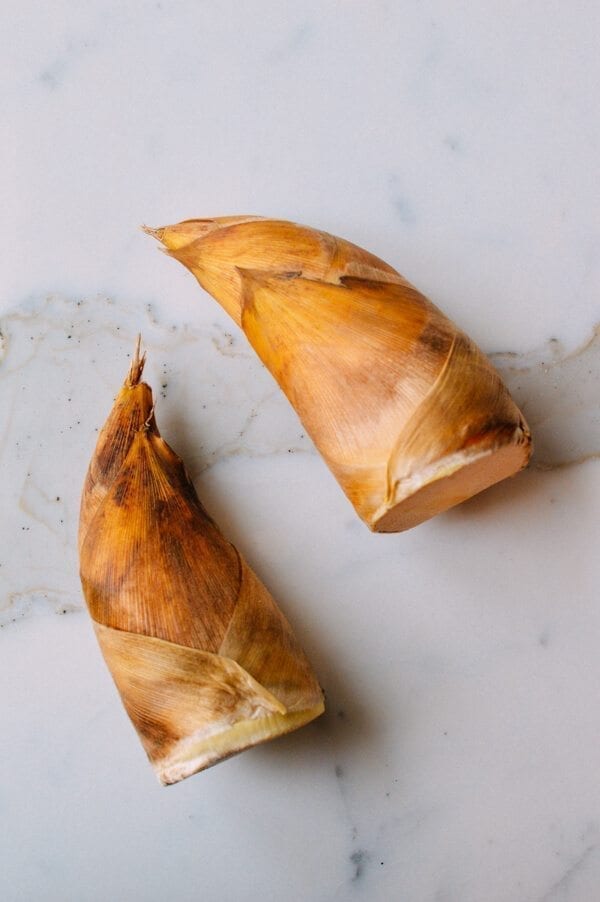
These are the tender shoots of the bamboo plant, before they grow into the huge green stalks on which martial arts masters battle it out in the wuxia film, Crouching Tiger Hidden Dragon. Bamboo shoots fall into two categories: winter bamboo shoots (dōngsǔn – 冬笋) and spring shoots (chūnsǔn – 春笋). Obviously, they’re seasonal, so it’s hard to find fresh bamboo shoots outside of China. Find them canned, in vacuum sealed packages, and in the freezer section of your local Chinese grocery store. Bamboo shoots are super versatile—use them in stir-fries, soups, braises, and more.
Water Bamboo (茭白, Jiāobái)
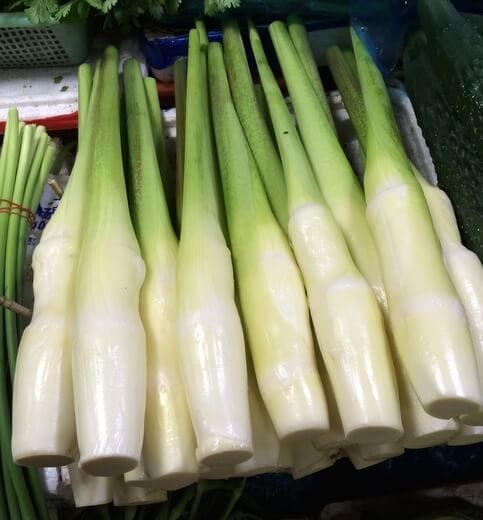
Water bamboo, or jiāo bái, is difficult to find here in the U.S., but we have seen it seasonally available in Chinatown. It’s actually the overgrown stem of Manchurian wild rice, and it has a similar texture to bamboo shoots, albeit a bit more tender. It is commonly stir-fried, but it can also be prepared in a manner similar to our Braised Spring Bamboo Shoots (油焖笋) recipe.
Water Chestnuts (馬蹄, mǎ tí)
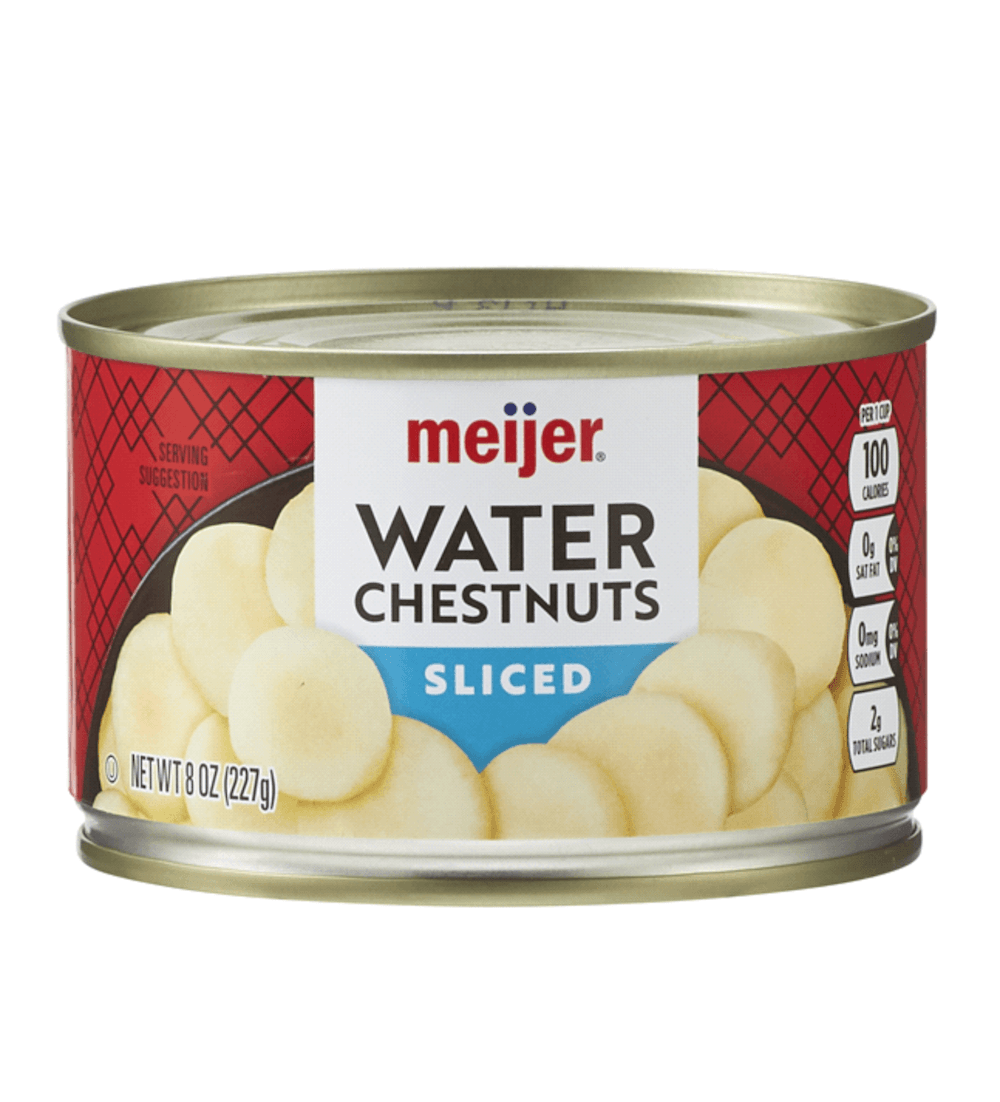
Water Chestnuts are crisp-crunchy (kind of like jícama) and a common addition to Chinese American takeout dishes as well as certain dumplings and dim sum items. While they may resemble chestnuts, they have a completely different taste and texture. Find them canned in Chinese groceries and the “ethnic” aisle of some supermarkets.
Bean Sprouts (豆芽, Dòuyá)
There are two types of bean sprouts: mung bean sprouts and soybean sprouts. For either kind, avoid long, stringy, brown, or limp sprouts, as these are sure signs that the sprouts have been out on the supermarket floor for too long. Let’s talk about the differences.
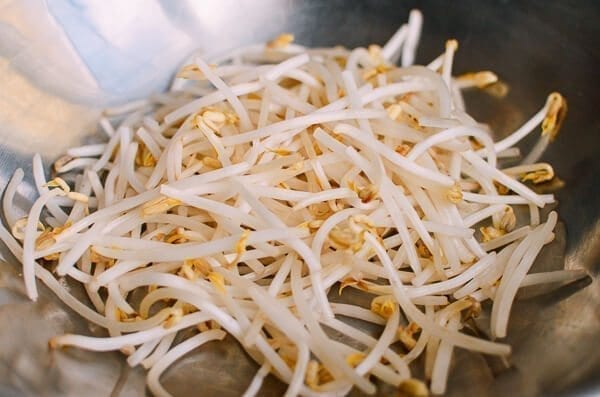
Mung bean sprouts, or lǜ dòu yá (绿豆芽) are more common, and have a small “head” the size of a grain of barley. We add them to many dishes, from fried rice and noodles, to stir-fries. Try our Chicken & Bean Sprout Stir-fry!
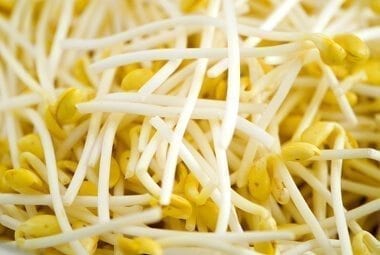
Soybean sprouts, or huáng dòuyá (黄豆芽) have a yellow head the size of a small bean. They are a bit more fibrous, so we use them when we want added texture contrast to a dish, like in our Sichuan Boiled Beef recipe or our “As You Wish Vegetables”.
Fresh Soybeans / Edamame (毛豆, Máodòu)
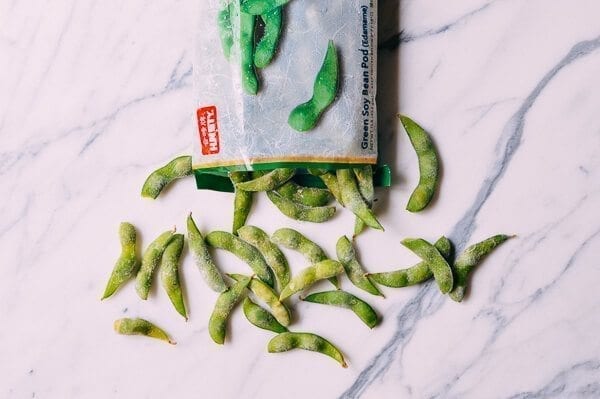
You’ve probably had edamame as an appetizer at a Japanese restaurant. What many people don’t know is that it’s technically a type of soybean. You can buy them frozen in the pod for boiling/steaming, or shelled for stir-frying. We mostly use the shelled beans in our house!
Fava beans / broad beans (蚕豆, cán dòu)
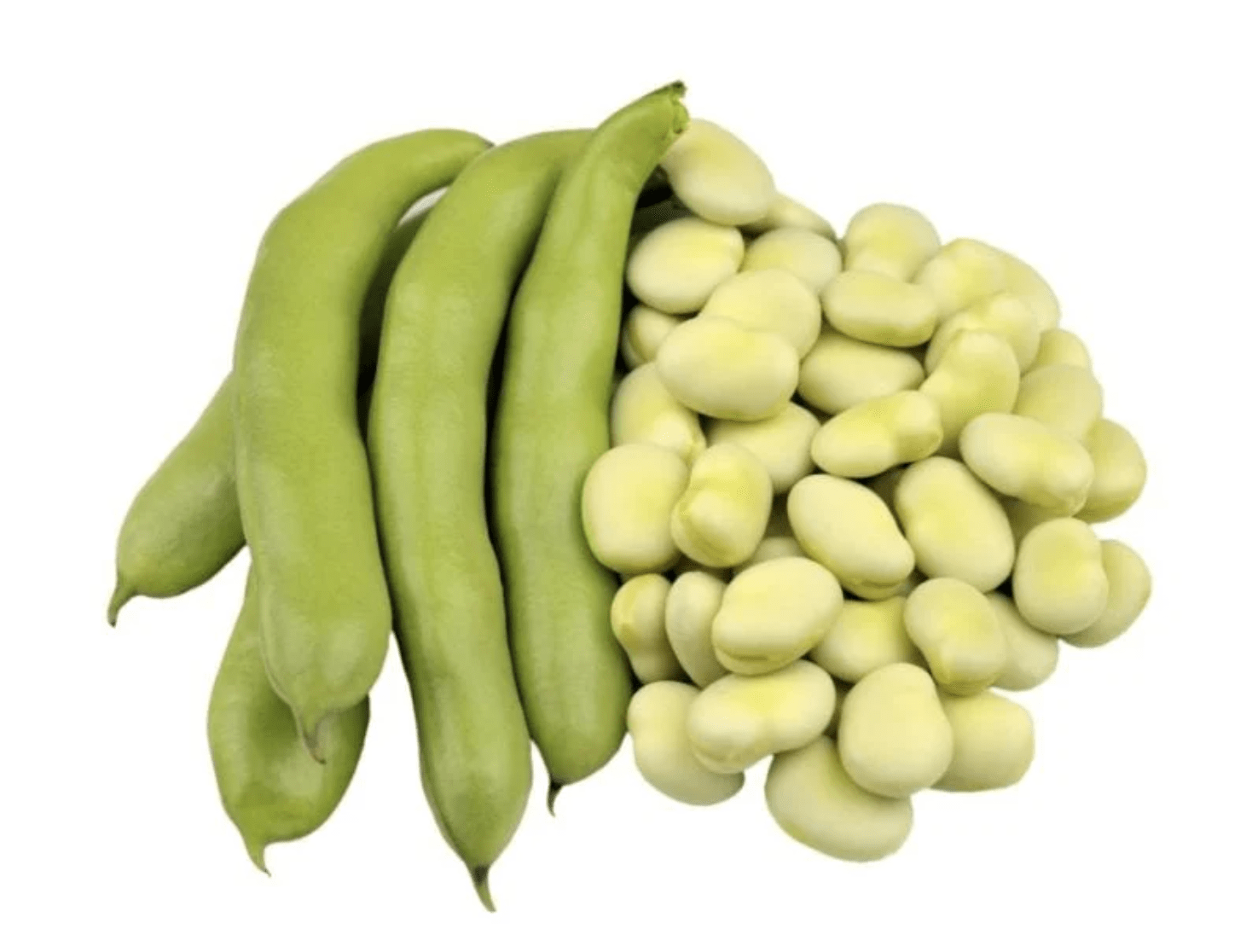
Fava beans, also known as broad beans or cán dòu (蚕豆), aren’t commonly eaten on their own in Chinese cuisine. However, they are fermented to make spicy bean sauce (doubanjiang) and also to make noodles. Check out our Vegetable Noodles With Shrimp, where we use broad bean noodles.
Long Beans (豇豆, Jiāngdòu)
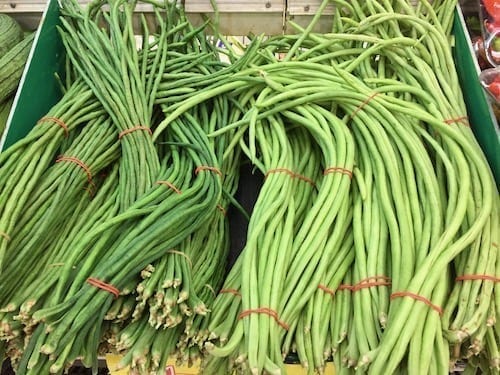
Also called yardlong beans or cowpeas, these are similar in taste and texture to string beans. They can be different colors, from light to dark green to purple. We cut them into 3-inch segments or finely chop them, and stir-fry them like we would any other green vegetable. You’ll also see pickled long beans in our pickled long bean noodle soup.
Kelp (海带, Hǎidài)
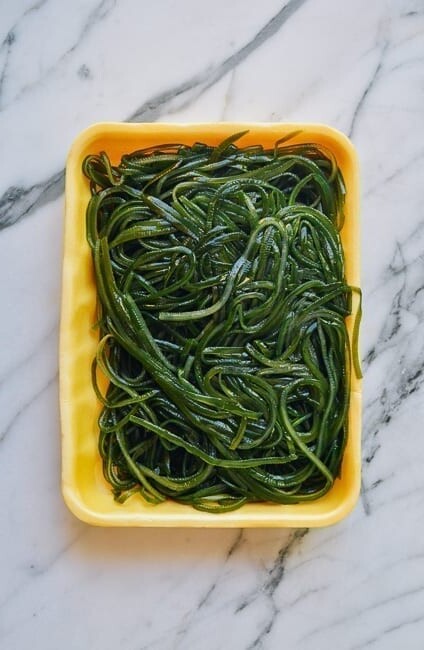
Kelp is a thick, meaty type of seaweed known as hǎi dài (海带) in Chinese. It’s produced mostly in China and cultivated and harvested from the sea in large sheets. Kelp comes in many dried forms—as sheets or in strips, but this variety shown here is fresh and cut into long thin noodles. It has a very strong oceanic taste, as well as a lot of natural umami (MSG was originally created as the result of trying to isolate the umami flavor in kelp). It’s also super healthy for you, with lots of vitamins and minerals! Try it in our Chinese Seaweed Salad.
our hand-picked pantry essentials—in one place!
We worked with Pearl River Mart, a family-owned Manhattan Chinatown institution in business since 1971, to collect our hand-picked pantry essentials (and some extras!) into this incredible Pantry Essential Friendship Box. These are the ingredients we use in our own kitchen. Get it shipped directly to you, and start cooking!
Get The Woks of Life x Pearl River Mart Pantry Essentials Friendship Box!
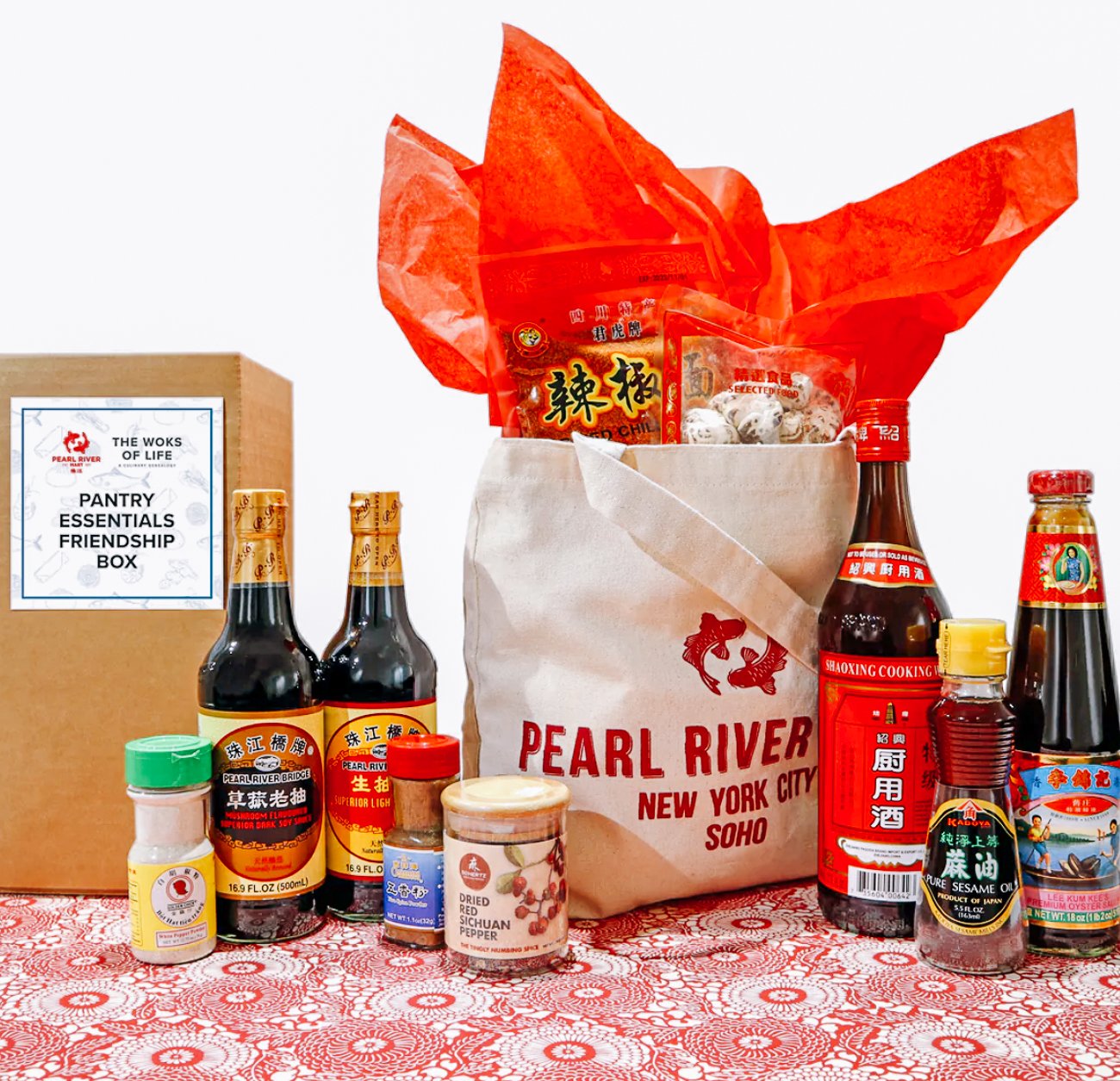
Wrap it up along with a copy of our cookbook for a unique wedding/wedding shower, holiday, birthday, or anytime gift! If you want to beef up the gift basket even more, Pearl River Mart sells woks, wok spatulas, and a plethora of other Chinese kitchen equipment! Check out our Chinese cooking tools page for ideas.
